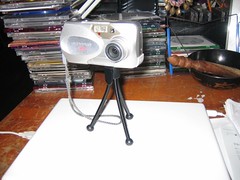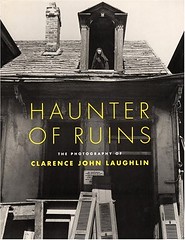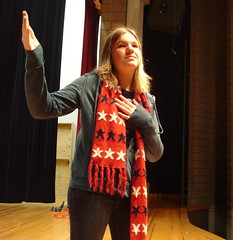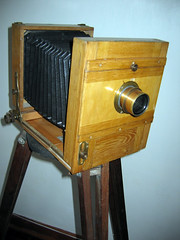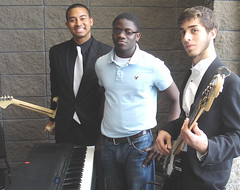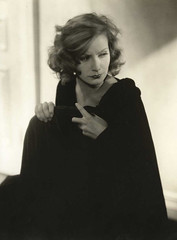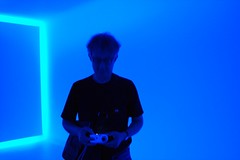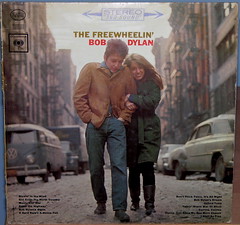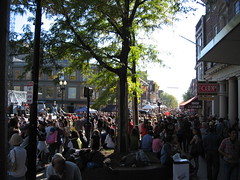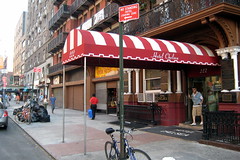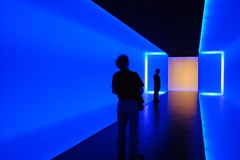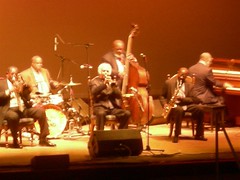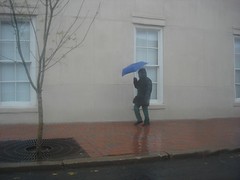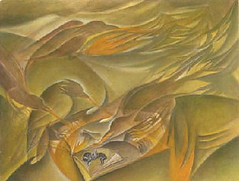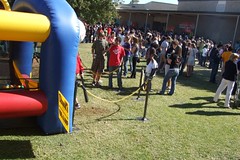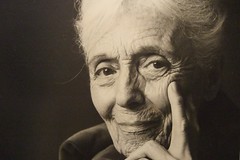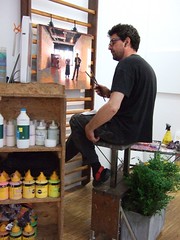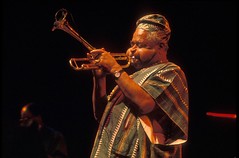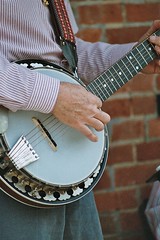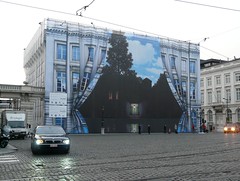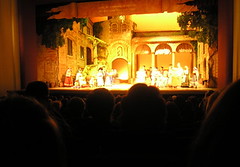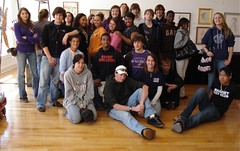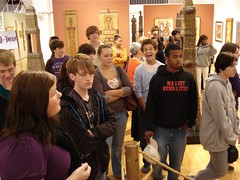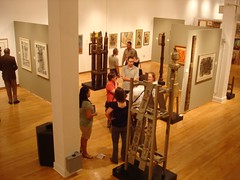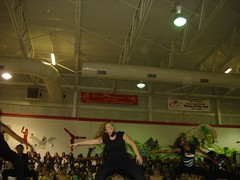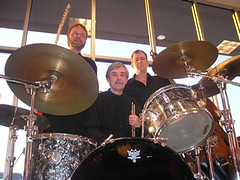THE BEST PHOTOGRAPHY TRICKS OF ALL TIME
1. Half-pressing the shutter button (to prefocus) eliminates shutter lag.
Everyone hates shutter lag. That's the half-second delay between the time you press the shutter button and the time the photo is actually snapped--during which your child, pet, or action photo slips away. (Pocket cams have shutter lag; S.L.R. cameras don't.)
Shutter lag is the time it takes the camera to calculate focus and exposure. Thing is, you can make it calculate that stuff ahead of time. Aim the camera, anticipating where the subject will be, and half-press the shutter button. When you hear the beep, you've locked in the exposure and focus. Keep the button half-pressed; now you're ready. When the subject appears, push the rest of the way down. Presto: no shutter lag!
2. For the blurred-background effect, back up and zoom in.
In technical terms, what you're looking at is a limited depth of field. That's a geek-shutterbug term meaning, "which part of the scene, front-to-back, is in focus." Subject yes; background, no.
That beautiful, professional effect is easy to get if you have an S.L.R.; it practically happens automatically. (Dial up a wide aperture--a low f-stop number--to accentuate the effect.)
On a pocket cam, choose Portrait mode. Move your subjects away from the background--the farther, the better. Finally, use the back-up-and-zoom-in trick. That is, stand away from your subjects--the farther, the better--and then use the camera's zoom to "bring you" back up close. Thanks to a quirk of optics, zooming in helps create a shallow depth of field.
You may look like a weirdo, backing way up like that. But it really works.
3. Force the flash outdoors.
It might not occur to you to use the flash when you're taking pictures of people on a bright, sunny day. It certainly wouldn't occur to the camera.
Problem is, the camera "reads" the scene and concludes that there's tons of sunlight. But it's not smart enough to recognize that the face you're photographing is in shadow. You wind up with a dark, silhouetted face.
The solution is to force the flash on--a very common photographer's trick. The flash can provide just the right amount of fill light to brighten your subject's face--without affecting the exposure of the background.
It eliminates the silhouette effect. Better yet, it provides very flattering front light. It softens smile lines and wrinkles, and it puts a nice twinkle in the subject's eyes. (It also means that you can ignore the old "rule" about taking photos on a sunny day--the one that tells the photographer to "Stand with the sun behind you.")
4. Exploit the magic hour.
Hate to break it to you, but serious photographers don't get a lot of sleep. Show me an award-winning, breathtaking landscape--a pond shimmering in the woods, golden clouds surrounding a mountain peak--and I'll show you someone who got up at 4:40 am to be ready with a tripod as the sun rose.
That hour after sunrise, and the hour before sunset, is known as the magic hour. The lower angle of the sun and the slightly denser atmosphere create rich, saturated tones, plus what photographers call sweet light. It's an amazing, golden glow that makes everybody look beautiful, every building look enchanted, and every landscape look breathtaking.
It's a far cry from the midday sun, which creates much harsher shadows and much more severe highlights. Landscape shooting is more difficult when the sun is high overhead on a bright, cloudless day.
5. Use a lampshade socket as a tripod.
Another chronic problem with pocket cams is getting blur when you don't want it--which is just about any time you're indoors without the flash. Yeah, yeah, we know: "Use a tripod." But come on: for the average person on vacation or at school events, buying, hauling around, and setting up a tripod is a preposterous burden.
Often, there's a wall, parked car, bureau, tree, pillar, door frame, or some other big, stationary object you can use instead, to prop up either the camera or your arms.
But here's my favorite trick: It turns out that the threads at the top of just about any lamp--the place where the lampshade screws on--are precisely the same diameter as a tripod mount! In a pinch, you can whip off the lampshade, screw on the camera, and presto: You've got a rock-steady indoor tripod.
People might think you're a genius, a nutcase, or a genius nutcase, but never mind. It works.
Tuesday, December 23, 2008
Saturday, December 20, 2008
Clarence John Laughlin, Louisiana's great photographer
Ghosts along the Mississippi is a classic book of large photos of large plantation houses along the Louisiana run of the Father of Waters.
I always find something new to enjoy when I return to the book.
Wikipedia says, Clarence John Laughlin (1905 - 1985) was a United States photographer best known for his surrealist photographs of the U.S. South.
He worked on personal projects utilizing a wide range of photographic styles and techniques, from simple geometric abstractions of architectural features to elaborately-staged allegories utilizing models, costumes, and props.
Many historians credit Laughlin as being the first true surrealist photographer in the United States. His images are often nostalgic, reflecting the influence of Eugene Atget and other photographers who tried to capture vanishing urban landscapes. Laughlin's best known book, "Ghosts Along the Mississippi", was first published in 1948.
I always find something new to enjoy when I return to the book.
Wikipedia says, Clarence John Laughlin (1905 - 1985) was a United States photographer best known for his surrealist photographs of the U.S. South.
He worked on personal projects utilizing a wide range of photographic styles and techniques, from simple geometric abstractions of architectural features to elaborately-staged allegories utilizing models, costumes, and props.
Many historians credit Laughlin as being the first true surrealist photographer in the United States. His images are often nostalgic, reflecting the influence of Eugene Atget and other photographers who tried to capture vanishing urban landscapes. Laughlin's best known book, "Ghosts Along the Mississippi", was first published in 1948.
Friday, December 19, 2008
Semester exam guide for Fine Arts
Semester exam guide / Fine Arts survey / Trudeau
Open notes, multiple choice, Scantron, 100-question exam based on past tests.
1. Phoenicia was an ancient civilization centered in the north of Canaan, with its heartland along the coastal regions of modern day Lebanon, Syria and __ .
2. The Levant was an ancient region in the Eastern end of the Mediterranean. T / F
3. In the realm of language and literature, the Phoenicians are credited with development of the __ .
4. Phoenicians must be related to the Jewish peoples. T / F
5. Jabal is Arabic for a) monument b) mountain c) knife wound d) mascara.
6. Spain makes the biggest part of what we refer to as the __ Peninsula.
7. The Muslim Arabs invaded Christian European territory
by ship. T / F
8. S’il vous plait must mean a) thank you b) best regards
c) please d) if you must go . . .
9. Drama, including tragedy and comedy, is one of the arts that was not created by the Romans nor by the Greeks.
T / F
10. The Times review of Abby Singer’s Bistro featured two pieces of grilled, marinated __, which were served on a bed of arugula with tomatoes, olives and prosciutto.
11. The Times reviews notes that “My friend scrapped off the onions — not an onion person myself, I couldn't blame her.” That was a) illiterate in at least 2 ways b) a marvelous moment to share with the reader.
12. The two principal elements of a review, according to your teacher, are __ and __ .
13. Sparta vs Athens: the wars that took place about 400 BCE on the __ Peninsula.
14. To the Greeks, withholding intimate contact from their husbands - to stop the war - seems to be a a) ridiculous idea b) clever idea in a play by Aristophanes called Lysistrata.
15. Characterized by sinuous, asymmetrical lines based on plant forms, this style was used in architecture, interior design, graphic art and design, jewelry, and glass. It was international in scope and was called __ __ .
1. Israel
2. true
3. alphabet
4. true
5. b mountain
6. Iberian
7. true
8. c please
9. false
10. mozzarella / cheese
11. a illiterate
12. description, evaluation
13. Peloponnese
14. a ridiculous
15. art nouveau
Fine Arts / open notes intro to Greece quiz / Robert Trudeau
1. The sea that lies both north and east of Greece is one that Homer called “the wine-dark sea.” It is the __.
2. Sparta, Olympia and Corinth are on the principal peninsula of Greece. This region has four fingers (small peninsulas) and is called the ___ .
3. Across the Adriatic Sea from Greece lies a nation whose southern region was once part of the Greek Empire: __ .
4. Place whose name - when translated from the Latin - implies “middle” and “earth,” or “terrain,” therefore a region in the middle of two great regions of the earth. The place is the __ __.
5. The ancient culture and nation - the name means “purple” - that has, in the modern era, become Lebanon: __ .
6. Israel is both a historic name and the contemporary name of a recently-formed nation. Its ancient name is __ .
7. The great Greek city of Egypt: __ .
8. Give the modern name of an ancient Turkish city that has borne 3 names: __ .
9. What is the mnemonic that allows us to remember the names - in order - of the most famous Greek philosophers?
10. What material object - disallowing sculpture - performed the same role as photography in the Classical Greek era?
11. The dirty little secret of Athenian Democracy: the use of a large number of __ .
12. Who developed the earlier notable civilization?
a) Cretans b) Cretins c) Athenians d) Spartans.
13. The word that denotes an advanced sense of beauty and purity of taste: __ .
14. The building is the Parthenon; the mesa upon which it lies is the __ .
15. Eleuthera is a gorgeous island in the Bahamas. Eleutherae is an inland location in the nation of __ .
16. Aphrodite would be known by the Romans as __ .
17. The Norwegian explorer and author who tested the trekking possibilities of the ancient Mesopotamians, Polynesians and Egyptians. Thor __ .
18. The notable Greek island that suffered an enormous volcanic explosion about 1600 BCE.
19. An example of sagging in ancient Greek statuary:
__ __ .
20. __ is a philosophy of art and life that emphasizes order, balance, and simplicity.
1. Aegean
2. Peloponnesus
3. L' Italia
4. Mediterranean
5. Phoenicia
6. Palestine
7. Alexandria
8. Istanbul (Constantinople, Byzantium)
9. Spa (a hot-springs resort in Belgium)
10. pottery
11.slaves
12. Cretans
13. aesthetics
14. Acropolis
15. Greece
16. Venus
17. Heyerdahl
18. Santorini (aka Thera)
19. the Venus de Milo
20. classicism
1. Democracy and art was enabled partly by the system of slavery.
2. The Greek Empire, which preceded the Roman Empire, included parts of Turkey and Italy. See Greek temples in 3 nations.
3. The Minoan civilization, on the island of Crete, preceded the rise of Athens, the center of art, and Sparta, the center of militarism.
4. The city-states of Sparta and Corinth as well as the temples at Olympia are on a peninsula known as the Peloponnesus.
5. Greek pottery is so finely painted that it is an important source of historic evidence. Their pottery resembles photography.
6. Helmets, shields and ships show that the Greeks had a taste for the fine curve and graceful proportion. They had a high sense of the
aesthetic: artistic beauty and taste.
7. The Spartans pursued the art of war, the Athenians were equally serious about the aesthetics in every other phase of life.
8. The name of the great temple above Athens is the Parthenon, named for Athena Parthenos, "Athena the the virgin." Btw, here we see a connection with Mary, virgin mother of Jesus. The mesa on which the extraordinary temple is built is the Acropolis (acrophobia, fear of heights).
9. The shocking realism achieved by Greek sculptors is perhaps exemplified by the Discus Thrower created by Myron of Eleutherae about 450 BC.
10. Spa, a word denoting a health center, is an acronym for the 3 great Athenian thinkers: Socrates, Plato and Aristotle. "Spa" gives us the chronological order.
1. Ellington Great pianist as well as band leader and composer?
2. Ellington Famous as a New Yorker but was a native of Washington, DC?
3. Armstrong Loved smoking reefer?
4. Armstrong Cut some great records in Chicago?
5. Ellington Famous for the tune "Take the A Train"?
6. Armstrong Famous for his performances of the tune "Basin St Blues"?
7. Reinhardt Played his instrument with 2 fingers?
8. Armstrong Married 4 times?
9. Reinhardt Born and raised in Belgium?
10. Armstrong Wrote 2 biographies?
Vocab - sociocultural, hermeneutic, enigmatic, abysmal, cacophony, solace, quantum, squalling, disharmonious, dramatic foil, pouty, semi-coherent, brooding, mopey, ciphers, flouting, libido, rakish, facade, somber, demeanor, suave, cynical, cold war, totalitarian, humorlessness, paladin, pseudoserious,, cosmopolitan, provincial
11. sonically chaotic: cacaphony or disharmonious
12. showing off - bragging: flouting
13. the face of a buidling or a person: facade
14. mysterious: enigmatic
15. rotten terrible: abysmal
16. soberly controls your entire life: totalitarian
17. person with broad educational background and broad point of view: cosmopolitan
18. the psychic and emotional energy associated with instinctual biological drives: libido
19. a paragon of chivalry; a heroic champion: paladin
20. person whose education and outlook are limited and inhibited: provincial, parochial
Back to jazz -
21. Chicago Second city of Jazz (and of the US in general): __ .
22. NYC City in which the fathers of jazz - such as Joe Oliver and Louis Armstrong settled.
23. diaspora Movement of impoverished black Americans from the farms of the Deep South to urban centers of Upper Midwest and Northeast: __ .
24. 1890's - 1900 Approximate date for the birth of jazz: __ .
25. Congo Square or Place Congo Name given to the place in New Orleans where slaves gathered on Sundays: __ __ .
26. Creole Louisiana term for people of mixed ethnic background, esp. a mixture of French, Spanish, native American and Afro-Caribbean: __ .
27. African (or mixed) Gens de couleur libre was a special ethnic category in NO. It indicated a person who was __ yet not a slave.
28. Second line Parade dance practiced by New Orleanians in funeral processions: __ __ .
29. Dizzy Gillespie A radical bend in the direction of his trumpet’s bell became part of the visual signature of __ __.
30. shibboleth "Break it down," "chops," "crib," "daddy-o," "dig" and similar words were jazz __, words that could indicate that you were an insider. Eventually these words went mainstream, such as the recent phrase “wanna give a shout-out to Shirley.”
Three of the greatest figures of early jazz:
a) Louis Amrmstrong
b) Duke Ellington
c) Django Rheinhardt
What's the best fellow - of the 3 above - to accompany these cues?
1. Born and raised in Washington, DC?
2. Great pianist as well as band leader and composer?
3. Loved smoking reefer?
4. Cut some great records in Chicago?
5. The tune "Take the A Train"?
6. The tune "Basin St Blues"?
7. Played his instrument with 2 fingers?
8. Married 4 times?
9. Born and raised in Belgium?
10. Wrote 2 biographies?
1. Duke
2. Duke
3. Satchmo
4.Satchmo
5. Duke
6. Satchmo
7. Django - the guitarist's hands were damaged in a fire.
8. Satchmo.
9. Django
10. Satchmo - he traveled with a typewriter because he loved writing letters. Armstrong wrote 2 autobiographies. The one that survives is My Life in New Orleans (avail in paperback
Jazz and modern art quiz
1. First city of jazz: __ __.
2. Second city of Jazz (and of the US in general): __ .
3. Third city to which the fathers of jazz - such as Joe Oliver and Louis Armstrong - relocated: __ __ .
4. Movement of impoverished black Americans from the farms of the Deep South to urban centers of Upper Midwest and Northeast: __ .
5. Approximate date for the birth of jazz: __ .
6. Name given to the place in New Orleans where slaves gathered on Sundays: __ __ .
7. Louisiana term for people of mixed ethnic background, esp. a mixture of French, Spanish, native American and Afro-Caribbean: __ .
8. Gens de couleur libre was a special ethnic category in NO. It indicated a person who was __ yet not a slave.
9. Another name for the French Quarter is Vieux Carre; it means: __ __ .
10. Parade dance practiced by New Orleanians at funerals: __ __ .
11. The founder of a drum manufacturing company (the Beatles used these) is credited with developing the trap drum set. The company? __ .
12. The key mechanical item in a drum set, or trap drum kit, is a foot pedal that enables the percussionist to sock the heck out of the __ __ .
13. The advent of the drum kit at the turn of the century enabled musical groups to reduce the percussion personnel from __ players to one.
14. The banjo originates with the ethnic group known as __ __.
15. Typically the 5-string banjo is used in playing __ music.
16. The 4-string banjo is commonly used in __ music.
17. A radical bend in the direction of his trumpet’s __ became part of the visual signature of Dizzie Gillespie.
18. Dizzie Gillespie was intimately associated with an intellectual type of jazz that emphasized cascades of notes played pell mell. This early modern jazz was called __.
19. "Break it down," "chops," "crib," "daddy-o," "dig" and similar words were jazz __, words that could indicate that you were an insider. Eventually these words went mainstream, such as the recent phrase “wanna give a shout-out to my man, Roscoe.”
20. A plectrum as in plectrum banjo, is a musical device better known as . . . a) mute b) capo c) resonator d) pick.
21. Gillespie, Ella Fitzgerald and other jazzers offered vocal improvisation with random vocables and syllables or without words at all. This is called __ singing.
22. The Vietnam War Memorial Wall mimics a wound in that it cuts into the turf - the viewer of the wall walks down a sidewalk which goes progressively deeper into the soil of the national mall. The design is based on a chevron, or shape of the letter _ .
23. The Vietnam War Memorial Wall was designed by a female and, in fact, an Asian-American. Her name is Maya __ .
24. Rushing water and island-like concrete blocks in the midst of the torrent are part of the design of the water gardens downtown in the city of __ __.
25. Freud's work with free association, dream analysis and the hidden unconscious was of the utmost importance to the artists known as __ in developing methods to liberate imagination.
26. Trompe l'oeil: A style of painting that presents an illusion of __ __ .
27. The French phrase trompe l'œil means to decieve the __ .
1. New Orleans.
2. Chicago_ .
3. NYC .
4. Black diaspora .
5. 1900
6. Congo Square / Place Congo
7. Creole
8. African / Black
9. Old Section / Old Square
10. Second Line
11. Ludwig
12. bass drum
13. Three
14. African-Americans
15. Jazz
16. folk
17. Horn or bell
18. Bebop Dizzie
19. shibboleths
20. pick.
21. scat singing
22. V
23. Lin
24. Ft Worth
25. Surrealists
26. 3 D reality
27. eye
European Fine Arts
1. This type of art (or literature) includes the element of surprise, unexpected juxtapositions and non sequitur (“does not follow”): ____ .
2. Clyde Connnell did most of her work in Shreveport and at Lake Bistineau but she was born and raised on a plantation in Texas. T / F
3. Name the distinctive indie / pop group from Iceland in which the guitarist uses a cello bow and sings in an incomprehensible language. a) Radiohead b) Sigur Ros
c) Tetrafusion d) Damien Hirst.
4. American photographer known for his large-scale, highly stylized black and white portraits, photos of flowers and naked men. Robert ___ .
5. In 1924, in collaboration with Man Ray, the French artist
Fernand __ produced and directed the iconic and Futurism-influenced film, Ballet Mécanique (Mechanical Ballet). Neither abstract nor narrative, it is a series of images of a woman's lips and teeth, close-up shots of ordinary objects, and repeated images of human activities and machines in rhythmic movement.
6. René François ____ (1898 - 1967) was a Belgian surrealist artist. Popular interest in his work rose in the 1960s. His imagery has influenced pop, minimalist and conceptual art.
7. ____ism describes movements in various forms of art and design, especially visual art and music, where the work is stripped down to its most fundamental features. Architect Ludwig Mies van der Rohe adopted the motto "Less is more" to describe his aesthetic tactic of arranging the numerous necessary components of a building to create an impression of extreme simplicity.
8. The history of the ownership of an object, especially when documented or authenticated. Used in regards artworks, antiques, and books: a) provenance
b) scrutiny c) faux marbre d) dilettante.
9. The region known as the Cote d’Azur lies alongside the _(geographical feature)_ in southern France.
10. The _____ are members of the upper or merchant class, whose status or power comes from employment, education, and wealth.
1. surrealism 2. F 3. Sigur Ros 4. Mapplethorpe 5. Leger 6. Magritte
7. Minimalism 8. a provenance 9. Mediterranean 10. bourgeois
Dylan and Miles and the East Coast / Trudeau
1. Name the old community within Boston that is home to Harvard University: a) Cambridge b) Oxford c) Newport
d) Lexington.
2. Name the Massachusetts island that is the summer home to America’s wealthy class. __ __
3. Name the Massachusetts peninsula that has provided inspiration to many writers and is dominated by the artistic community called P’town, or Provincetown. __ __
4. Bard U, Colgate U, Cornell U, St John's U, Sarah Lawrence U, SUNY, Syracuse U, US Military Academy (West Point) and Vassar U are all institutions in this state.
Name the state.
5. Berklee School of Music, Brandeis U, Mt Holyoke U, Tufts U, Wellesley U and Woods Hole Oceanographic Inst.: what state?
6. Columbia U, Barnard U, Cooper Union, Fordham U, Hofstra U, Hunter College, Juilliard School, Manhattan School of Music, Marymount U, New School for Social Research, NYU, Pace U, Parsons School of Design, Pratt Institute and Union Theological Seminary. What state?
7. Midtown Manhattan hotel famous for artistic residents such as Arthur C Clarke, William S Burroughs and Andy Warhol.
8. Harvard U was founded in the a) 1500’s b) 1600’s c) 1700’s d) 1800’s.
9. Harvard’s greatest academic distinction lies in its
a) library b) Medical school c) religious studies
d) Radcliffe College.
10. Dylan was born and raised in a) NYC b) Minnesota c) Texas d) California.
11. Miles Davis was known for relatively flashy playing rather than sparse playing that served the song. T / F
12. Which of the 2 great artists, Miles and Dylan, had major problems with drug abuse?
13. Name the East Coast town famous for both an influential folk fest and a celebrated jazz fest.
14. “Kind of __ “ is the name of the best-selling and classic Miles Davis album from which come tunes such as “So what.”
15. Notable photographic chronicler of the denizens of Storyville, New Orleans: EJ __ .
16. An ideal type of lens for portraiture: __ .
17. Recommended movie on the holocaust based on a novel by Irish writer John Boyne: __ __ .
18. Type of lighting useful for modeling, which is bringing out the contours of the subject’s face: __ .
1. a Cambridge
2. Martha’s Vineyard
3. Cape Cod
4. NY
5. Mass
6. NY
7. Chelsea
8. b 1600’s
9. a library
10. b Minnesota
11. F
12. Miles
13. Newport, RI
14. Blue
15. Belocq
16. telephoto
17. Boy in Striped Pajamas
18. side lighting
Open notes, multiple choice, Scantron, 100-question exam based on past tests.
1. Phoenicia was an ancient civilization centered in the north of Canaan, with its heartland along the coastal regions of modern day Lebanon, Syria and __ .
2. The Levant was an ancient region in the Eastern end of the Mediterranean. T / F
3. In the realm of language and literature, the Phoenicians are credited with development of the __ .
4. Phoenicians must be related to the Jewish peoples. T / F
5. Jabal is Arabic for a) monument b) mountain c) knife wound d) mascara.
6. Spain makes the biggest part of what we refer to as the __ Peninsula.
7. The Muslim Arabs invaded Christian European territory
by ship. T / F
8. S’il vous plait must mean a) thank you b) best regards
c) please d) if you must go . . .
9. Drama, including tragedy and comedy, is one of the arts that was not created by the Romans nor by the Greeks.
T / F
10. The Times review of Abby Singer’s Bistro featured two pieces of grilled, marinated __, which were served on a bed of arugula with tomatoes, olives and prosciutto.
11. The Times reviews notes that “My friend scrapped off the onions — not an onion person myself, I couldn't blame her.” That was a) illiterate in at least 2 ways b) a marvelous moment to share with the reader.
12. The two principal elements of a review, according to your teacher, are __ and __ .
13. Sparta vs Athens: the wars that took place about 400 BCE on the __ Peninsula.
14. To the Greeks, withholding intimate contact from their husbands - to stop the war - seems to be a a) ridiculous idea b) clever idea in a play by Aristophanes called Lysistrata.
15. Characterized by sinuous, asymmetrical lines based on plant forms, this style was used in architecture, interior design, graphic art and design, jewelry, and glass. It was international in scope and was called __ __ .
1. Israel
2. true
3. alphabet
4. true
5. b mountain
6. Iberian
7. true
8. c please
9. false
10. mozzarella / cheese
11. a illiterate
12. description, evaluation
13. Peloponnese
14. a ridiculous
15. art nouveau
Fine Arts / open notes intro to Greece quiz / Robert Trudeau
1. The sea that lies both north and east of Greece is one that Homer called “the wine-dark sea.” It is the __.
2. Sparta, Olympia and Corinth are on the principal peninsula of Greece. This region has four fingers (small peninsulas) and is called the ___ .
3. Across the Adriatic Sea from Greece lies a nation whose southern region was once part of the Greek Empire: __ .
4. Place whose name - when translated from the Latin - implies “middle” and “earth,” or “terrain,” therefore a region in the middle of two great regions of the earth. The place is the __ __.
5. The ancient culture and nation - the name means “purple” - that has, in the modern era, become Lebanon: __ .
6. Israel is both a historic name and the contemporary name of a recently-formed nation. Its ancient name is __ .
7. The great Greek city of Egypt: __ .
8. Give the modern name of an ancient Turkish city that has borne 3 names: __ .
9. What is the mnemonic that allows us to remember the names - in order - of the most famous Greek philosophers?
10. What material object - disallowing sculpture - performed the same role as photography in the Classical Greek era?
11. The dirty little secret of Athenian Democracy: the use of a large number of __ .
12. Who developed the earlier notable civilization?
a) Cretans b) Cretins c) Athenians d) Spartans.
13. The word that denotes an advanced sense of beauty and purity of taste: __ .
14. The building is the Parthenon; the mesa upon which it lies is the __ .
15. Eleuthera is a gorgeous island in the Bahamas. Eleutherae is an inland location in the nation of __ .
16. Aphrodite would be known by the Romans as __ .
17. The Norwegian explorer and author who tested the trekking possibilities of the ancient Mesopotamians, Polynesians and Egyptians. Thor __ .
18. The notable Greek island that suffered an enormous volcanic explosion about 1600 BCE.
19. An example of sagging in ancient Greek statuary:
__ __ .
20. __ is a philosophy of art and life that emphasizes order, balance, and simplicity.
1. Aegean
2. Peloponnesus
3. L' Italia
4. Mediterranean
5. Phoenicia
6. Palestine
7. Alexandria
8. Istanbul (Constantinople, Byzantium)
9. Spa (a hot-springs resort in Belgium)
10. pottery
11.slaves
12. Cretans
13. aesthetics
14. Acropolis
15. Greece
16. Venus
17. Heyerdahl
18. Santorini (aka Thera)
19. the Venus de Milo
20. classicism
1. Democracy and art was enabled partly by the system of slavery.
2. The Greek Empire, which preceded the Roman Empire, included parts of Turkey and Italy. See Greek temples in 3 nations.
3. The Minoan civilization, on the island of Crete, preceded the rise of Athens, the center of art, and Sparta, the center of militarism.
4. The city-states of Sparta and Corinth as well as the temples at Olympia are on a peninsula known as the Peloponnesus.
5. Greek pottery is so finely painted that it is an important source of historic evidence. Their pottery resembles photography.
6. Helmets, shields and ships show that the Greeks had a taste for the fine curve and graceful proportion. They had a high sense of the
aesthetic: artistic beauty and taste.
7. The Spartans pursued the art of war, the Athenians were equally serious about the aesthetics in every other phase of life.
8. The name of the great temple above Athens is the Parthenon, named for Athena Parthenos, "Athena the the virgin." Btw, here we see a connection with Mary, virgin mother of Jesus. The mesa on which the extraordinary temple is built is the Acropolis (acrophobia, fear of heights).
9. The shocking realism achieved by Greek sculptors is perhaps exemplified by the Discus Thrower created by Myron of Eleutherae about 450 BC.
10. Spa, a word denoting a health center, is an acronym for the 3 great Athenian thinkers: Socrates, Plato and Aristotle. "Spa" gives us the chronological order.
1. Ellington Great pianist as well as band leader and composer?
2. Ellington Famous as a New Yorker but was a native of Washington, DC?
3. Armstrong Loved smoking reefer?
4. Armstrong Cut some great records in Chicago?
5. Ellington Famous for the tune "Take the A Train"?
6. Armstrong Famous for his performances of the tune "Basin St Blues"?
7. Reinhardt Played his instrument with 2 fingers?
8. Armstrong Married 4 times?
9. Reinhardt Born and raised in Belgium?
10. Armstrong Wrote 2 biographies?
Vocab - sociocultural, hermeneutic, enigmatic, abysmal, cacophony, solace, quantum, squalling, disharmonious, dramatic foil, pouty, semi-coherent, brooding, mopey, ciphers, flouting, libido, rakish, facade, somber, demeanor, suave, cynical, cold war, totalitarian, humorlessness, paladin, pseudoserious,, cosmopolitan, provincial
11. sonically chaotic: cacaphony or disharmonious
12. showing off - bragging: flouting
13. the face of a buidling or a person: facade
14. mysterious: enigmatic
15. rotten terrible: abysmal
16. soberly controls your entire life: totalitarian
17. person with broad educational background and broad point of view: cosmopolitan
18. the psychic and emotional energy associated with instinctual biological drives: libido
19. a paragon of chivalry; a heroic champion: paladin
20. person whose education and outlook are limited and inhibited: provincial, parochial
Back to jazz -
21. Chicago Second city of Jazz (and of the US in general): __ .
22. NYC City in which the fathers of jazz - such as Joe Oliver and Louis Armstrong settled.
23. diaspora Movement of impoverished black Americans from the farms of the Deep South to urban centers of Upper Midwest and Northeast: __ .
24. 1890's - 1900 Approximate date for the birth of jazz: __ .
25. Congo Square or Place Congo Name given to the place in New Orleans where slaves gathered on Sundays: __ __ .
26. Creole Louisiana term for people of mixed ethnic background, esp. a mixture of French, Spanish, native American and Afro-Caribbean: __ .
27. African (or mixed) Gens de couleur libre was a special ethnic category in NO. It indicated a person who was __ yet not a slave.
28. Second line Parade dance practiced by New Orleanians in funeral processions: __ __ .
29. Dizzy Gillespie A radical bend in the direction of his trumpet’s bell became part of the visual signature of __ __.
30. shibboleth "Break it down," "chops," "crib," "daddy-o," "dig" and similar words were jazz __, words that could indicate that you were an insider. Eventually these words went mainstream, such as the recent phrase “wanna give a shout-out to Shirley.”
Three of the greatest figures of early jazz:
a) Louis Amrmstrong
b) Duke Ellington
c) Django Rheinhardt
What's the best fellow - of the 3 above - to accompany these cues?
1. Born and raised in Washington, DC?
2. Great pianist as well as band leader and composer?
3. Loved smoking reefer?
4. Cut some great records in Chicago?
5. The tune "Take the A Train"?
6. The tune "Basin St Blues"?
7. Played his instrument with 2 fingers?
8. Married 4 times?
9. Born and raised in Belgium?
10. Wrote 2 biographies?
1. Duke
2. Duke
3. Satchmo
4.Satchmo
5. Duke
6. Satchmo
7. Django - the guitarist's hands were damaged in a fire.
8. Satchmo.
9. Django
10. Satchmo - he traveled with a typewriter because he loved writing letters. Armstrong wrote 2 autobiographies. The one that survives is My Life in New Orleans (avail in paperback
Jazz and modern art quiz
1. First city of jazz: __ __.
2. Second city of Jazz (and of the US in general): __ .
3. Third city to which the fathers of jazz - such as Joe Oliver and Louis Armstrong - relocated: __ __ .
4. Movement of impoverished black Americans from the farms of the Deep South to urban centers of Upper Midwest and Northeast: __ .
5. Approximate date for the birth of jazz: __ .
6. Name given to the place in New Orleans where slaves gathered on Sundays: __ __ .
7. Louisiana term for people of mixed ethnic background, esp. a mixture of French, Spanish, native American and Afro-Caribbean: __ .
8. Gens de couleur libre was a special ethnic category in NO. It indicated a person who was __ yet not a slave.
9. Another name for the French Quarter is Vieux Carre; it means: __ __ .
10. Parade dance practiced by New Orleanians at funerals: __ __ .
11. The founder of a drum manufacturing company (the Beatles used these) is credited with developing the trap drum set. The company? __ .
12. The key mechanical item in a drum set, or trap drum kit, is a foot pedal that enables the percussionist to sock the heck out of the __ __ .
13. The advent of the drum kit at the turn of the century enabled musical groups to reduce the percussion personnel from __ players to one.
14. The banjo originates with the ethnic group known as __ __.
15. Typically the 5-string banjo is used in playing __ music.
16. The 4-string banjo is commonly used in __ music.
17. A radical bend in the direction of his trumpet’s __ became part of the visual signature of Dizzie Gillespie.
18. Dizzie Gillespie was intimately associated with an intellectual type of jazz that emphasized cascades of notes played pell mell. This early modern jazz was called __.
19. "Break it down," "chops," "crib," "daddy-o," "dig" and similar words were jazz __, words that could indicate that you were an insider. Eventually these words went mainstream, such as the recent phrase “wanna give a shout-out to my man, Roscoe.”
20. A plectrum as in plectrum banjo, is a musical device better known as . . . a) mute b) capo c) resonator d) pick.
21. Gillespie, Ella Fitzgerald and other jazzers offered vocal improvisation with random vocables and syllables or without words at all. This is called __ singing.
22. The Vietnam War Memorial Wall mimics a wound in that it cuts into the turf - the viewer of the wall walks down a sidewalk which goes progressively deeper into the soil of the national mall. The design is based on a chevron, or shape of the letter _ .
23. The Vietnam War Memorial Wall was designed by a female and, in fact, an Asian-American. Her name is Maya __ .
24. Rushing water and island-like concrete blocks in the midst of the torrent are part of the design of the water gardens downtown in the city of __ __.
25. Freud's work with free association, dream analysis and the hidden unconscious was of the utmost importance to the artists known as __ in developing methods to liberate imagination.
26. Trompe l'oeil: A style of painting that presents an illusion of __ __ .
27. The French phrase trompe l'œil means to decieve the __ .
1. New Orleans.
2. Chicago_ .
3. NYC .
4. Black diaspora .
5. 1900
6. Congo Square / Place Congo
7. Creole
8. African / Black
9. Old Section / Old Square
10. Second Line
11. Ludwig
12. bass drum
13. Three
14. African-Americans
15. Jazz
16. folk
17. Horn or bell
18. Bebop Dizzie
19. shibboleths
20. pick.
21. scat singing
22. V
23. Lin
24. Ft Worth
25. Surrealists
26. 3 D reality
27. eye
European Fine Arts
1. This type of art (or literature) includes the element of surprise, unexpected juxtapositions and non sequitur (“does not follow”): ____ .
2. Clyde Connnell did most of her work in Shreveport and at Lake Bistineau but she was born and raised on a plantation in Texas. T / F
3. Name the distinctive indie / pop group from Iceland in which the guitarist uses a cello bow and sings in an incomprehensible language. a) Radiohead b) Sigur Ros
c) Tetrafusion d) Damien Hirst.
4. American photographer known for his large-scale, highly stylized black and white portraits, photos of flowers and naked men. Robert ___ .
5. In 1924, in collaboration with Man Ray, the French artist
Fernand __ produced and directed the iconic and Futurism-influenced film, Ballet Mécanique (Mechanical Ballet). Neither abstract nor narrative, it is a series of images of a woman's lips and teeth, close-up shots of ordinary objects, and repeated images of human activities and machines in rhythmic movement.
6. René François ____ (1898 - 1967) was a Belgian surrealist artist. Popular interest in his work rose in the 1960s. His imagery has influenced pop, minimalist and conceptual art.
7. ____ism describes movements in various forms of art and design, especially visual art and music, where the work is stripped down to its most fundamental features. Architect Ludwig Mies van der Rohe adopted the motto "Less is more" to describe his aesthetic tactic of arranging the numerous necessary components of a building to create an impression of extreme simplicity.
8. The history of the ownership of an object, especially when documented or authenticated. Used in regards artworks, antiques, and books: a) provenance
b) scrutiny c) faux marbre d) dilettante.
9. The region known as the Cote d’Azur lies alongside the _(geographical feature)_ in southern France.
10. The _____ are members of the upper or merchant class, whose status or power comes from employment, education, and wealth.
1. surrealism 2. F 3. Sigur Ros 4. Mapplethorpe 5. Leger 6. Magritte
7. Minimalism 8. a provenance 9. Mediterranean 10. bourgeois
Dylan and Miles and the East Coast / Trudeau
1. Name the old community within Boston that is home to Harvard University: a) Cambridge b) Oxford c) Newport
d) Lexington.
2. Name the Massachusetts island that is the summer home to America’s wealthy class. __ __
3. Name the Massachusetts peninsula that has provided inspiration to many writers and is dominated by the artistic community called P’town, or Provincetown. __ __
4. Bard U, Colgate U, Cornell U, St John's U, Sarah Lawrence U, SUNY, Syracuse U, US Military Academy (West Point) and Vassar U are all institutions in this state.
Name the state.
5. Berklee School of Music, Brandeis U, Mt Holyoke U, Tufts U, Wellesley U and Woods Hole Oceanographic Inst.: what state?
6. Columbia U, Barnard U, Cooper Union, Fordham U, Hofstra U, Hunter College, Juilliard School, Manhattan School of Music, Marymount U, New School for Social Research, NYU, Pace U, Parsons School of Design, Pratt Institute and Union Theological Seminary. What state?
7. Midtown Manhattan hotel famous for artistic residents such as Arthur C Clarke, William S Burroughs and Andy Warhol.
8. Harvard U was founded in the a) 1500’s b) 1600’s c) 1700’s d) 1800’s.
9. Harvard’s greatest academic distinction lies in its
a) library b) Medical school c) religious studies
d) Radcliffe College.
10. Dylan was born and raised in a) NYC b) Minnesota c) Texas d) California.
11. Miles Davis was known for relatively flashy playing rather than sparse playing that served the song. T / F
12. Which of the 2 great artists, Miles and Dylan, had major problems with drug abuse?
13. Name the East Coast town famous for both an influential folk fest and a celebrated jazz fest.
14. “Kind of __ “ is the name of the best-selling and classic Miles Davis album from which come tunes such as “So what.”
15. Notable photographic chronicler of the denizens of Storyville, New Orleans: EJ __ .
16. An ideal type of lens for portraiture: __ .
17. Recommended movie on the holocaust based on a novel by Irish writer John Boyne: __ __ .
18. Type of lighting useful for modeling, which is bringing out the contours of the subject’s face: __ .
1. a Cambridge
2. Martha’s Vineyard
3. Cape Cod
4. NY
5. Mass
6. NY
7. Chelsea
8. b 1600’s
9. a library
10. b Minnesota
11. F
12. Miles
13. Newport, RI
14. Blue
15. Belocq
16. telephoto
17. Boy in Striped Pajamas
18. side lighting
Tuesday, December 16, 2008
Photography has made history much easier to understand and the invention of the portable camera was a great advancement
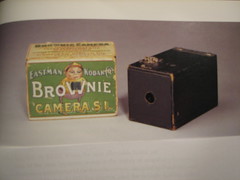
Photography has made history much easier to understand and the invention of the portable camera was a great advancement
Originally uploaded by Narayan Hearn
The Brownie used the daylight loading system popularized by Eastman, says Wikipedia. More than 100,000 were sold in 1900, its first year.
The Brownie, which had been intended for the children's market, was quickly embraced by all age groups and became an American classic. Brownie box cameras were still made after the Second World War.
In 1884, Eastman patented a photographic medium that replaced fragile glass plates with a photo-emulsion coated on paper rolls. The invention of roll film greatly sped up the process of recording multiple images.[2]
Eastman then received a patent in 1888 for a camera designed to use roll film. He coined the marketing phrase, "You press the button, we do the rest."
On September 4, 1888 Eastman registered the trademark Kodak. The letter "K" had been a favorite of Eastman's. He said, "[I]t seems a strong, incisive sort of letter".[5] Eastman and his mother devised the name Kodak with an anagram set. He used three principal concepts to create the name: it must be short, it could not be mispronounced, and it could not resemble anything else or be associated with anything other than itself.[6]
Philanthropy was a notable part of Eastman's life: He donated to the University of Rochester, establishing the Eastman School of Music and School of Dentistry; to Tuskegee Institute; and to the Massachusetts Institute of Technology (MIT). In all, he gave away some $100 million.
A word that means a "room" in Latin: camera
Photography is the result of combining several technical discoveries, says Wikipedia. Long before the first photographs were made, Chinese philosopher Mo Ti described a pinhole camera in the 5th century B.C.E,[1] Ibn al-Haytham (Alhazen) (965–1040) studied the camera obscura and pinhole camera,[1][2]
Albertus Magnus (1139-1238) discovered silver nitrate, and Georges Fabricius (1516-1571) discovered silver chloride. Daniel Barbaro described a diaphragm in 1568.
Wilhelm Homberg described how light darkened some chemicals (photochemical effect) in 1694. The fiction book Giphantie (by the French Tiphaigne de la Roche, 1729-1774) described what can be interpreted as photography.
The camera obscura did not record an image, but projected images from an opening in the wall of a darkened room onto a surface, turning the room into a large pinhole camera. The phrase camera obscura literally means dark chamber.
The first permanent photograph was an image produced in 1825 by the French inventor Joseph Nicéphore Niépce on a polished pewter plate covered with a petroleum derivative called bitumen of Judea. Produced with a camera, the image required an eight-hour exposure in bright sunshine.
In 1839 Louis Daguerre announced that he had invented a process using silver on a copper plate called the daguerreotype.
By 1840, William Henry Fox Talbot had invented the calotype process. He coated paper sheets with silver chloride to create an intermediate negative image. Unlike a daguerreotype, a calotype negative could be used to reproduce positive prints, like most chemical films do today. Talbot patented[7] this process, which greatly limited its adoption.
The daguerreotype proved popular in responding to the demand for portraiture emerging from the middle classes during the Industrial Revolution.[citation needed] This demand, that could not be met in volume and in cost by oil painting, added to the push for the development of photography.
Albertus Magnus (1139-1238) discovered silver nitrate, and Georges Fabricius (1516-1571) discovered silver chloride. Daniel Barbaro described a diaphragm in 1568.
Wilhelm Homberg described how light darkened some chemicals (photochemical effect) in 1694. The fiction book Giphantie (by the French Tiphaigne de la Roche, 1729-1774) described what can be interpreted as photography.
The camera obscura did not record an image, but projected images from an opening in the wall of a darkened room onto a surface, turning the room into a large pinhole camera. The phrase camera obscura literally means dark chamber.
The first permanent photograph was an image produced in 1825 by the French inventor Joseph Nicéphore Niépce on a polished pewter plate covered with a petroleum derivative called bitumen of Judea. Produced with a camera, the image required an eight-hour exposure in bright sunshine.
In 1839 Louis Daguerre announced that he had invented a process using silver on a copper plate called the daguerreotype.
By 1840, William Henry Fox Talbot had invented the calotype process. He coated paper sheets with silver chloride to create an intermediate negative image. Unlike a daguerreotype, a calotype negative could be used to reproduce positive prints, like most chemical films do today. Talbot patented[7] this process, which greatly limited its adoption.
The daguerreotype proved popular in responding to the demand for portraiture emerging from the middle classes during the Industrial Revolution.[citation needed] This demand, that could not be met in volume and in cost by oil painting, added to the push for the development of photography.
Wednesday, December 10, 2008
Soft side light streams from the glass brick in the lobby of the Pac at Cmhs
Soft side light is what you want for your matted portrait project for Fine Arts. This week we looked at the way photogs use soft side lighting to bring out the contours of the face.
Another trick we discussed is use of the telephoto lens. A lens of 105 mm or greater will produce a degree of compression of features that nearly always is flattering.
"Telephoto lenses allow us to reach out into space to bring our subjects closer to us. While wide-angle lenses can expand our frame to deepen the illusion of space, telephoto lenses can compress our subjects within the frame, creating much flatter images, and layer subject upon subject to help express our ideas.
Telephoto lenses also allow us to move closer to people to create powerful portraits. We do not invade their space, and their responses are often more relaxed as a result." So its says at Highbeam.com.
Another trick we discussed is use of the telephoto lens. A lens of 105 mm or greater will produce a degree of compression of features that nearly always is flattering.
"Telephoto lenses allow us to reach out into space to bring our subjects closer to us. While wide-angle lenses can expand our frame to deepen the illusion of space, telephoto lenses can compress our subjects within the frame, creating much flatter images, and layer subject upon subject to help express our ideas.
Telephoto lenses also allow us to move closer to people to create powerful portraits. We do not invade their space, and their responses are often more relaxed as a result." So its says at Highbeam.com.
Saturday, December 6, 2008
The Boy in the Striped Pyjamas: outstanding movie on the holocaust at RFC Dec 5 - 12
Get indie credit by writing an evaluation of The Boy in the Striped Pajamas. Check it at RobinsonFilmCenter.org. Highly recommended.
See my review at Shreveport.blogspot.com.
See my review at Shreveport.blogspot.com.
Friday, December 5, 2008
Fine Arts Portrait Project: find a photo to imitate
In art, an accepted practice is to begin by imitating the masters. In the fine arts class portrait, please find an iconic photo to use as your model.
This one of Greta garbo is by one of the great names in photography, Edward Steichen.
- In a GoogleDoc insert the image that is your inspiration and guide. Label the entry "portrait."
- Use side lighting.
- Vary the POV. As I've said, I favor shooting from above.
- Vary the tonality; you might try b/w or sepia.
- Try to find a clean background: one that is plain and that doesn not compete with the face for attention.
This one of Greta garbo is by one of the great names in photography, Edward Steichen.
- In a GoogleDoc insert the image that is your inspiration and guide. Label the entry "portrait."
- Use side lighting.
- Vary the POV. As I've said, I favor shooting from above.
- Vary the tonality; you might try b/w or sepia.
- Try to find a clean background: one that is plain and that doesn not compete with the face for attention.
EJ Bellocq: one of America's most famous photographers captured the Storyville women in the era when jazz was being born
John Ernest Joseph Bellocq (1873-1949) was a professional photographer who worked in New Orleans during the early 20th century. Bellocq is remembered for his haunting photographs of the prostitutes of Storyville, New Orleans' legalized red light district, says Wikipedia.
All the photographs are portraits of individual women. Some are nude, some dressed respectably, others posed as if acting a mysterious narrative. Many of the negatives were badly damaged, in part deliberately. This encouraged speculation about the reasons why they had been taken and later violated. Many of the faces had been scraped out; whether this was done by E. J. Bellocq himself, his Jesuit priest brother who inherited them after E. J.'s death, or someone else is unknown.
All the photographs are portraits of individual women. Some are nude, some dressed respectably, others posed as if acting a mysterious narrative. Many of the negatives were badly damaged, in part deliberately. This encouraged speculation about the reasons why they had been taken and later violated. Many of the faces had been scraped out; whether this was done by E. J. Bellocq himself, his Jesuit priest brother who inherited them after E. J.'s death, or someone else is unknown.
Thursday, December 4, 2008
Jazz & Vocab quiz and answers
1. Ellington Great pianist as well as band leader and composer?
2. Ellington Famous as a New Yorker but was a native of Washington, DC?
3. Armstrong Loved smoking reefer?
4. Armstrong Cut some great records in Chicago?
5. Ellington Famous for the tune "Take the A Train"?
6. Armstrong Famous for his performances of the tune "Basin St Blues"?
7. Reinhardt Played his instrument with 2 fingers?
8. Armstrong Married 4 times?
9. Reinhardt Born and raised in Belgium?
10. Armstrong Wrote 2 biographies?
Vocab - sociocultural, hermeneutic, enigmatic, abysmal, cacophony, solace, quantum, squalling, disharmonious, dramatic foil, pouty, semi-coherent, brooding, mopey, ciphers, flouting, libido, rakish, facade, somber, demeanor, suave, cynical, cold war, totalitarian, humorlessness, paladin, pseudoserious,, cosmopolitan, provincial
11. sonically chaotic: cacaphony or disharmonious
12. showing off - bragging: flouting
13. the face of a buidling or a person: facade
14. mysterious: enigmatic
15. rotten terrible: abysmal
16. soberly controls your entire life: totalitarian
17. person with broad educational background and broad point of view: cosmopolitan
18. the psychic and emotional energy associated with instinctual biological drives: libido
19. a paragon of chivalry; a heroic champion: paladin
20. person whose education and outlook are limited and inhibited: provincial, parochial
Back to jazz -
21. Chicago Second city of Jazz (and of the US in general): __ .
22. NYC City in which the fathers of jazz - such as Joe Oliver and Louis Armstrong settled.
23. diaspora Movement of impoverished black Americans from the farms of the Deep South to urban centers of Upper Midwest and Northeast: __ .
24. 1890's - 1900 Approximate date for the birth of jazz: __ .
25. Congo Square or Place Congo Name given to the place in New Orleans where slaves gathered on Sundays: __ __ .
26. Creole Louisiana term for people of mixed ethnic background, esp. a mixture of French, Spanish, native American and Afro-Caribbean: __ .
27. African (or mixed) Gens de couleur libre was a special ethnic category in NO. It indicated a person who was __ yet not a slave.
28. Second line Parade dance practiced by New Orleanians in funeral processions: __ __ .
29. Dizzy Gillespie A radical bend in the direction of his trumpet’s bell became part of the visual signature of __ __.
30. shibboleth "Break it down," "chops," "crib," "daddy-o," "dig" and similar words were jazz __, words that could indicate that you were an insider. Eventually these words went mainstream, such as the recent phrase “wanna give a shout-out to Shirley.”
2. Ellington Famous as a New Yorker but was a native of Washington, DC?
3. Armstrong Loved smoking reefer?
4. Armstrong Cut some great records in Chicago?
5. Ellington Famous for the tune "Take the A Train"?
6. Armstrong Famous for his performances of the tune "Basin St Blues"?
7. Reinhardt Played his instrument with 2 fingers?
8. Armstrong Married 4 times?
9. Reinhardt Born and raised in Belgium?
10. Armstrong Wrote 2 biographies?
Vocab - sociocultural, hermeneutic, enigmatic, abysmal, cacophony, solace, quantum, squalling, disharmonious, dramatic foil, pouty, semi-coherent, brooding, mopey, ciphers, flouting, libido, rakish, facade, somber, demeanor, suave, cynical, cold war, totalitarian, humorlessness, paladin, pseudoserious,, cosmopolitan, provincial
11. sonically chaotic: cacaphony or disharmonious
12. showing off - bragging: flouting
13. the face of a buidling or a person: facade
14. mysterious: enigmatic
15. rotten terrible: abysmal
16. soberly controls your entire life: totalitarian
17. person with broad educational background and broad point of view: cosmopolitan
18. the psychic and emotional energy associated with instinctual biological drives: libido
19. a paragon of chivalry; a heroic champion: paladin
20. person whose education and outlook are limited and inhibited: provincial, parochial
Back to jazz -
21. Chicago Second city of Jazz (and of the US in general): __ .
22. NYC City in which the fathers of jazz - such as Joe Oliver and Louis Armstrong settled.
23. diaspora Movement of impoverished black Americans from the farms of the Deep South to urban centers of Upper Midwest and Northeast: __ .
24. 1890's - 1900 Approximate date for the birth of jazz: __ .
25. Congo Square or Place Congo Name given to the place in New Orleans where slaves gathered on Sundays: __ __ .
26. Creole Louisiana term for people of mixed ethnic background, esp. a mixture of French, Spanish, native American and Afro-Caribbean: __ .
27. African (or mixed) Gens de couleur libre was a special ethnic category in NO. It indicated a person who was __ yet not a slave.
28. Second line Parade dance practiced by New Orleanians in funeral processions: __ __ .
29. Dizzy Gillespie A radical bend in the direction of his trumpet’s bell became part of the visual signature of __ __.
30. shibboleth "Break it down," "chops," "crib," "daddy-o," "dig" and similar words were jazz __, words that could indicate that you were an insider. Eventually these words went mainstream, such as the recent phrase “wanna give a shout-out to Shirley.”
Miles Davis: an edited bio from Wikipedia
Miles Dewey Davis III (May 26, 1926 – September 28, 1991) was an American jazz trumpeter, bandleader, and composer, notes Wikipedia.
Widely considered one of the most influential musicians of the 20th century, Davis was at the forefront of almost every major development in jazz from World War II to the 1990s: he played on various early bebop records and recorded one of the first cool jazz records; he was partially responsible for the development of hard bop and modal jazz, and both jazz-funk and jazz fusion arose from his work with other musicians in the late 1960s and early 1970s; and his final album blended jazz and rap.
Many leading jazz musicians made their names in Davis's groups, including pianist Herbie Hancock, saxophonist John Coltrane, saxophonist Kenny Garrett, and guitarist John McLaughlin.
As a trumpeter, Davis had a pure, round sound but also an unusual freedom of articulation and pitch. He was known for favoring a low register and relatively sparse playing that served the song rather than display flashy playing, but Davis was also capable of highly complex and technically demanding trumpet work.
Kind of Blue is his magnum opus. In March and April 1959, Davis re-entered the studio with his working sextet to record Kind of Blue. He called back Bill Evans for the album sessions as the music had been planned around Evans' piano style.[3] Equally crucially, both Davis and Evans had direct familiarity with the ideas of pianist George Russell regarding modal jazz, Davis from discussions with Russell and others prior to what came to be known as the Birth of the Cool sessions.
Davis convinced Coltrane to play with the group on one final European tour in the spring of 1960. Coltrane then departed to form his classic quartet, although he returned for some of the tracks on the 1961 album Someday My Prince Will Come.
By the end of the summer, Davis had convinced Wayne Shorter to quit Art Blakey's Jazz Messengers. Shorter became the principal composer of Davis' quintet, and some of his compositions of this era ("Footprints", "Nefertiti") are now standards.
By the time of E.S.P. (1965) Davis' lineup consisted of Wayne Shorter, Herbie Hancock, Ron Carter (bass) and Tony Williams (drums). This lineup, the last of his acoustic bands, is often known as "the second great quintet."
Electric Miles" by the time In a Silent Way had been recorded in February 1969, Davis had augmented his standard quintet with additional players. Hancock and Joe Zawinul were brought in to assist Corea on electric keyboards, and guitarist John McLaughlin made the first of his many appearances. By this point, Shorter was also doubling on soprano saxophone. After recording this album, Williams left to form his group Lifetime and was replaced by Jack DeJohnette.
Six months later, an even larger group of musicians, including Jack DeJohnette, Airto Moreira and Bennie Maupin recorded the double LP Bitches Brew, which became a huge seller, hitting gold record status (half a million copies) by 1976. This album and In a Silent Way were among the first fusions of jazz and rock that were commercially successful, building on the groundwork laid by Charles Lloyd, Larry Coryell, and many others who pioneered a genre that would become known simply as "Jazz-rock fusion".
Davis was troubled by osteoarthritis (which led to a hip replacement operation in 1976, the first of several), sickle-cell anemia, depression, bursitis, ulcers and a renewed dependence on alcohol and drugs (primarily cocaine), and his performances were routinely panned throughout late 1974 and early 1975. By the time the group reached Japan in February 1975, Davis was teetering on a physical breakdown and required copious amounts of vodka and narcotics to complete his engagements.
After a Newport Jazz Festival performance at Avery Fisher Hall in New York on July 1, 1975, Davis withdrew almost completely from the public eye for six years. As Gil Evans said, "His organism is tired. And after all the music he's contributed for 35 years, he needs a rest."[citation needed]
Davis characterized this period in his memoirs as a colorful time when wealthy women lavished him with sex and drugs. In reality, he had become completely dependent upon various drugs, spending nearly all of his time propped up on a couch in his apartment watching television, leaving only to score more drugs.
By 1979, Davis had rekindled his relationship with actress Cicely Tyson. With Tyson, Davis would overcome his heroin addiction and regain his enthusiasm for music. As he had not played trumpet for the better part of three years, regaining his famed embouchure proved to be particularly arduous. While recording The Man With The Horn (sessions were spread sporadically over 1979-1981), Davis played mostly wah-wah with a younger, larger band.
Miles Davis died on September 28, 1991 from a stroke, pneumonia and respiratory failure in Santa Monica, California at the age of 65. He is buried in Woodlawn Cemetery in The Bronx, New York.
Widely considered one of the most influential musicians of the 20th century, Davis was at the forefront of almost every major development in jazz from World War II to the 1990s: he played on various early bebop records and recorded one of the first cool jazz records; he was partially responsible for the development of hard bop and modal jazz, and both jazz-funk and jazz fusion arose from his work with other musicians in the late 1960s and early 1970s; and his final album blended jazz and rap.
Many leading jazz musicians made their names in Davis's groups, including pianist Herbie Hancock, saxophonist John Coltrane, saxophonist Kenny Garrett, and guitarist John McLaughlin.
As a trumpeter, Davis had a pure, round sound but also an unusual freedom of articulation and pitch. He was known for favoring a low register and relatively sparse playing that served the song rather than display flashy playing, but Davis was also capable of highly complex and technically demanding trumpet work.
Kind of Blue is his magnum opus. In March and April 1959, Davis re-entered the studio with his working sextet to record Kind of Blue. He called back Bill Evans for the album sessions as the music had been planned around Evans' piano style.[3] Equally crucially, both Davis and Evans had direct familiarity with the ideas of pianist George Russell regarding modal jazz, Davis from discussions with Russell and others prior to what came to be known as the Birth of the Cool sessions.
Davis convinced Coltrane to play with the group on one final European tour in the spring of 1960. Coltrane then departed to form his classic quartet, although he returned for some of the tracks on the 1961 album Someday My Prince Will Come.
By the end of the summer, Davis had convinced Wayne Shorter to quit Art Blakey's Jazz Messengers. Shorter became the principal composer of Davis' quintet, and some of his compositions of this era ("Footprints", "Nefertiti") are now standards.
By the time of E.S.P. (1965) Davis' lineup consisted of Wayne Shorter, Herbie Hancock, Ron Carter (bass) and Tony Williams (drums). This lineup, the last of his acoustic bands, is often known as "the second great quintet."
Electric Miles" by the time In a Silent Way had been recorded in February 1969, Davis had augmented his standard quintet with additional players. Hancock and Joe Zawinul were brought in to assist Corea on electric keyboards, and guitarist John McLaughlin made the first of his many appearances. By this point, Shorter was also doubling on soprano saxophone. After recording this album, Williams left to form his group Lifetime and was replaced by Jack DeJohnette.
Six months later, an even larger group of musicians, including Jack DeJohnette, Airto Moreira and Bennie Maupin recorded the double LP Bitches Brew, which became a huge seller, hitting gold record status (half a million copies) by 1976. This album and In a Silent Way were among the first fusions of jazz and rock that were commercially successful, building on the groundwork laid by Charles Lloyd, Larry Coryell, and many others who pioneered a genre that would become known simply as "Jazz-rock fusion".
Davis was troubled by osteoarthritis (which led to a hip replacement operation in 1976, the first of several), sickle-cell anemia, depression, bursitis, ulcers and a renewed dependence on alcohol and drugs (primarily cocaine), and his performances were routinely panned throughout late 1974 and early 1975. By the time the group reached Japan in February 1975, Davis was teetering on a physical breakdown and required copious amounts of vodka and narcotics to complete his engagements.
After a Newport Jazz Festival performance at Avery Fisher Hall in New York on July 1, 1975, Davis withdrew almost completely from the public eye for six years. As Gil Evans said, "His organism is tired. And after all the music he's contributed for 35 years, he needs a rest."[citation needed]
Davis characterized this period in his memoirs as a colorful time when wealthy women lavished him with sex and drugs. In reality, he had become completely dependent upon various drugs, spending nearly all of his time propped up on a couch in his apartment watching television, leaving only to score more drugs.
By 1979, Davis had rekindled his relationship with actress Cicely Tyson. With Tyson, Davis would overcome his heroin addiction and regain his enthusiasm for music. As he had not played trumpet for the better part of three years, regaining his famed embouchure proved to be particularly arduous. While recording The Man With The Horn (sessions were spread sporadically over 1979-1981), Davis played mostly wah-wah with a younger, larger band.
Miles Davis died on September 28, 1991 from a stroke, pneumonia and respiratory failure in Santa Monica, California at the age of 65. He is buried in Woodlawn Cemetery in The Bronx, New York.
Wednesday, December 3, 2008
the freewheelin' bob dylan, an artist principally through his lyrics
Bob Dylan (born Robert Allen Zimmerman, May 24, 1941, in Duluth, Minnesota) is an American singer-songwriter, author, poet, and painter, who has been a major figure in popular music for five decades, says Wikipedia.
Much of Dylan's most celebrated work dates from the 1960s, when he became an informal chronicler and a reluctant figurehead of American unrest. A number of his songs, such as "Blowin' in the Wind" and "The Times They Are a-Changin'",[2] became anthems of the civil rights movements.
Dylan's early lyrics incorporated political, social, philosophical, and literary influences, defying existing pop music conventions and appealing widely to the counterculture. While expanding and personalizing musical styles, he has explored many traditions of American song, from folk, blues and country to gospel, rock and roll and rockabilly to English, Scottish and Irish folk music, and even jazz and swing.[4] Dylan performs with the guitar, piano and harmonica.
Much of Dylan's most celebrated work dates from the 1960s, when he became an informal chronicler and a reluctant figurehead of American unrest. A number of his songs, such as "Blowin' in the Wind" and "The Times They Are a-Changin'",[2] became anthems of the civil rights movements.
Dylan's early lyrics incorporated political, social, philosophical, and literary influences, defying existing pop music conventions and appealing widely to the counterculture. While expanding and personalizing musical styles, he has explored many traditions of American song, from folk, blues and country to gospel, rock and roll and rockabilly to English, Scottish and Irish folk music, and even jazz and swing.[4] Dylan performs with the guitar, piano and harmonica.
Monday, December 1, 2008
Harvard University: history and prestige
Harvard University is a private university in Cambridge, Massachusetts, U.S., and a member of the Ivy League. Founded in 1636 by the colonial Massachusetts legislature,[2] Harvard is the oldest institution of higher learning in the United States. It is also the first and oldest corporation in North America.[4]
The institution was named Harvard College after a young clergyman named John Harvard—a graduate of England's Emmanuel College, Cambridge — who bequeathed the College his library of four hundred books and £779 (which was half of his estate).
Harvard's library collection contains more than 15 million volumes,[6] making it the largest academic library in the United States, and the fourth among the five "mega-libraries" of the world (after the Library of Congress, the British Library, and the French Bibliothèque nationale, but ahead of the New York Public Library).[7][8] Harvard is consistently ranked number one in international college and university rankings,[9][10][11][12][13] and has the largest financial endowment of any non-profit organization except for the Bill & Melinda Gates Foundation, standing at $38.7 billion as of 2008.
In 1999, Radcliffe College, founded in 1879 as the "Harvard Annex for Women",[5] merged formally with Harvard University.
In the mid 1800's parents began 'sending their children to Harvard College for the sake of its social advantages'".[17] Harvard was also an early leader in admitting ethnic and religious minorities. Stephen Steinberg, author of The Ethnic Myth, noted that "a climate of intolerance prevailed in many Eastern colleges long before discriminatory quotas were contemplated" and noted that "Jews tended to avoid such campuses as Yale and Princeton, which had reputations for bigotry.... [while] under President Eliot's administration, Harvard earned a reputation as the most liberal and democratic of the Big Three, and therefore Jews did not feel that the avenue to a prestigious college was altogether closed".[18] In 1870, one year into Eliot's term, Richard Theodore Greener became the first African-American to graduate from Harvard College. Seven years later, Louis Brandeis, the first Jewish justice on the Supreme Court, graduated from Harvard Law School.
Nevertheless, Harvard became the bastion of a distinctly Protestant elite — the so-called Boston Brahmin class — and continued to be so well into the 20th century.
The institution was named Harvard College after a young clergyman named John Harvard—a graduate of England's Emmanuel College, Cambridge — who bequeathed the College his library of four hundred books and £779 (which was half of his estate).
Harvard's library collection contains more than 15 million volumes,[6] making it the largest academic library in the United States, and the fourth among the five "mega-libraries" of the world (after the Library of Congress, the British Library, and the French Bibliothèque nationale, but ahead of the New York Public Library).[7][8] Harvard is consistently ranked number one in international college and university rankings,[9][10][11][12][13] and has the largest financial endowment of any non-profit organization except for the Bill & Melinda Gates Foundation, standing at $38.7 billion as of 2008.
In 1999, Radcliffe College, founded in 1879 as the "Harvard Annex for Women",[5] merged formally with Harvard University.
In the mid 1800's parents began 'sending their children to Harvard College for the sake of its social advantages'".[17] Harvard was also an early leader in admitting ethnic and religious minorities. Stephen Steinberg, author of The Ethnic Myth, noted that "a climate of intolerance prevailed in many Eastern colleges long before discriminatory quotas were contemplated" and noted that "Jews tended to avoid such campuses as Yale and Princeton, which had reputations for bigotry.... [while] under President Eliot's administration, Harvard earned a reputation as the most liberal and democratic of the Big Three, and therefore Jews did not feel that the avenue to a prestigious college was altogether closed".[18] In 1870, one year into Eliot's term, Richard Theodore Greener became the first African-American to graduate from Harvard College. Seven years later, Louis Brandeis, the first Jewish justice on the Supreme Court, graduated from Harvard Law School.
Nevertheless, Harvard became the bastion of a distinctly Protestant elite — the so-called Boston Brahmin class — and continued to be so well into the 20th century.
Cosmopolitanism: staying at the Hotel Chelsea, Midtown Manhattan
The Chelsea Hotel is known for celebrity accomplishments and infamy.
Sir Arthur C. Clarke wrote 2001: A Space Odyssey while staying at the Chelsea. William S. Burroughs wrote Naked Lunch here. Arthur Miller wrote After the Fall, Incident at Vichy, and The Price here. Dylan Thomas died here of alcohol poisoning on November 4, 1953. Charles R. Jackson, author of The Lost Weekend, committed suicide in his room on September 21, 1968. Sid Vicious of the Sex Pistols may have stabbed his girlfriend, Nancy Spungen, to death on October 12, 1978.
The hotel has provided long term residence to, among others, Mark Twain, O. Henry, William S. Burroughs, Leonard Cohen, Arthur Miller, Gore Vidal, Tennessee Williams, Allen Ginsberg, Jack Kerouac, Simone de Beauvoir, Robert Oppenheimer, Jean-Paul Sartre, Bill Landis, Thomas Wolfe, Charles Bukowski, Stanley Kubrick, Shirley Clarke, Cyndi Coyne, Mitch Hedberg, Milos Forman, Ethan Hawke, Dennis Hopper, Uma Thurman, Elliot Gould, Jane Fonda, Gaby Hoffmann, Pete Doherty, Tom Waits, Patti Smith, Dee Dee Ramone, Henri Chopin, John Cale, Édith Piaf, Joni Mitchell, Bob Dylan, Christo, Arman, Diego Rivera, Robert Crumb, Willem de Kooning, Claes Oldenburg, Jasper Johns, Robert Mapplethorpe, Janis Joplin, Jimi Hendrix, Richard Hell, Ryan Adams, Rufus Wainwright, Abdullah Ibrahim/Sathima Bea Benjamin, and Anthony Kiedis. Several survivors of the Titanic stayed for some time in this hotel as it is a short distance from Pier 54 where the Titanic was supposed to dock. Andy Warhol directed The Chelsea Girls, his 1966 film about his Factory regulars and their lives at the hotel, here.
Sir Arthur C. Clarke wrote 2001: A Space Odyssey while staying at the Chelsea. William S. Burroughs wrote Naked Lunch here. Arthur Miller wrote After the Fall, Incident at Vichy, and The Price here. Dylan Thomas died here of alcohol poisoning on November 4, 1953. Charles R. Jackson, author of The Lost Weekend, committed suicide in his room on September 21, 1968. Sid Vicious of the Sex Pistols may have stabbed his girlfriend, Nancy Spungen, to death on October 12, 1978.
The hotel has provided long term residence to, among others, Mark Twain, O. Henry, William S. Burroughs, Leonard Cohen, Arthur Miller, Gore Vidal, Tennessee Williams, Allen Ginsberg, Jack Kerouac, Simone de Beauvoir, Robert Oppenheimer, Jean-Paul Sartre, Bill Landis, Thomas Wolfe, Charles Bukowski, Stanley Kubrick, Shirley Clarke, Cyndi Coyne, Mitch Hedberg, Milos Forman, Ethan Hawke, Dennis Hopper, Uma Thurman, Elliot Gould, Jane Fonda, Gaby Hoffmann, Pete Doherty, Tom Waits, Patti Smith, Dee Dee Ramone, Henri Chopin, John Cale, Édith Piaf, Joni Mitchell, Bob Dylan, Christo, Arman, Diego Rivera, Robert Crumb, Willem de Kooning, Claes Oldenburg, Jasper Johns, Robert Mapplethorpe, Janis Joplin, Jimi Hendrix, Richard Hell, Ryan Adams, Rufus Wainwright, Abdullah Ibrahim/Sathima Bea Benjamin, and Anthony Kiedis. Several survivors of the Titanic stayed for some time in this hotel as it is a short distance from Pier 54 where the Titanic was supposed to dock. Andy Warhol directed The Chelsea Girls, his 1966 film about his Factory regulars and their lives at the hotel, here.
East Coast of the US: the traditional center of power and education
Continuous businesses and signage and urban landscape stretches from Boston to Washington, DC. It's a megalopolis that is synonymous with the Best & Brightest in America. For most of US history, this is where the elite worked and lived.
Massachusetts, home to Boston, Cambridge, Lexington and Concord, has been a power center since the Colonial era. With the advent of Irish (Kennedy family) and Italian immigrants, the vibrancy of Boston continued into the 20th century. On the coast is Martha's Vineyard, an island retreat for the wealthy class, and the hook-shaped peninsula called Cape Cod, an artistic center.
Universities? Harvard, Amherst, Berklee, Boston U, Brandeis, Mt Holyoke, Tufts, Wellesley, Woods Hole Oceanographic, etc.
Rhode Island's capital is the small city of Providence. There you will find RISD, the Rhode Island School of Design, and Brown U.
Newport is a city about 30 miles (48 km) south of Providence known as a New England summer resort and for the famous Newport Mansions. Beginning in the mid-nineteenth century, wealthy southern planters seeking to escape the heat began to build summer cottages on Bellevue Avenue such as Kingscote (1839).[5] Eventually wealthy Yankees such as the Wetmore family also began constructing larger mansions such as Chateau-sur-Mer (1852) nearby.[6] Most of these early families made a substantial part of their fortunes in the Old China Trade.[7] They were followed by the richest families in the country, such as the Vanderbilts and Astors who constructed the largest "cottages", such as The Breakers (1895) in the late nineteenth century.
The Newport Jazz Festival and Newport Folk Festival are also famous in cultural history.
Connecticut has a coastline steeped in US history, including Mystic Seaport (a historic center for whaling and shipping) and New Haven, home of Yale U. Additionally: the US Coast Guard Academy and the U of Conn.
The part of Conn closest to NYC is home to many of the power mongers and celebrities (Martha Stewart, David Letterman, etc) who work in Manhattan.
NYC is still pretty much capital of the world. Among its institutions:
Columbia U, Barnard, CCNY, Cooper Union, FIT, Fordham, Hofstra, Hunter College, Juilliard School, Manhattan School of Music, Marymount, New School for Social Research, NYU, Pace, Parsons School of Design, Pratt Institute, Rockefeller U, St Johns, School of Visual Arts, Union Theological Seminary.
Outside the city is Bard, Colgate, Cornell, St John's, Sarah Lawrence, SUNY, Syracuse, US Military Academy (West Point), Vassar, Yeshiva U.
Massachusetts, home to Boston, Cambridge, Lexington and Concord, has been a power center since the Colonial era. With the advent of Irish (Kennedy family) and Italian immigrants, the vibrancy of Boston continued into the 20th century. On the coast is Martha's Vineyard, an island retreat for the wealthy class, and the hook-shaped peninsula called Cape Cod, an artistic center.
Universities? Harvard, Amherst, Berklee, Boston U, Brandeis, Mt Holyoke, Tufts, Wellesley, Woods Hole Oceanographic, etc.
Rhode Island's capital is the small city of Providence. There you will find RISD, the Rhode Island School of Design, and Brown U.
Newport is a city about 30 miles (48 km) south of Providence known as a New England summer resort and for the famous Newport Mansions. Beginning in the mid-nineteenth century, wealthy southern planters seeking to escape the heat began to build summer cottages on Bellevue Avenue such as Kingscote (1839).[5] Eventually wealthy Yankees such as the Wetmore family also began constructing larger mansions such as Chateau-sur-Mer (1852) nearby.[6] Most of these early families made a substantial part of their fortunes in the Old China Trade.[7] They were followed by the richest families in the country, such as the Vanderbilts and Astors who constructed the largest "cottages", such as The Breakers (1895) in the late nineteenth century.
The Newport Jazz Festival and Newport Folk Festival are also famous in cultural history.
Connecticut has a coastline steeped in US history, including Mystic Seaport (a historic center for whaling and shipping) and New Haven, home of Yale U. Additionally: the US Coast Guard Academy and the U of Conn.
The part of Conn closest to NYC is home to many of the power mongers and celebrities (Martha Stewart, David Letterman, etc) who work in Manhattan.
NYC is still pretty much capital of the world. Among its institutions:
Columbia U, Barnard, CCNY, Cooper Union, FIT, Fordham, Hofstra, Hunter College, Juilliard School, Manhattan School of Music, Marymount, New School for Social Research, NYU, Pace, Parsons School of Design, Pratt Institute, Rockefeller U, St Johns, School of Visual Arts, Union Theological Seminary.
Outside the city is Bard, Colgate, Cornell, St John's, Sarah Lawrence, SUNY, Syracuse, US Military Academy (West Point), Vassar, Yeshiva U.
Open notes quiz on Thurs, Dec 4: Jazz and recent notes
The week of Dec 1 - 5 will bring the class down a historic road from big band swing to small combo bebop and cool jazz. The essential names will include Charlie Parker, Dizzy Gillespie, Miles Davis and John Coltrane.
From the contemporary players we will focus on trumpet player-composer Wynton Marsalis and drummer-composer Brian Blade.
The Thurs quiz will include questions on jazz and recent vocab.
The week's brief essay, due Friday on GoogleDocs, will be a review of a jazz album or epochal jazz tune such as the Miles Davis group's "So what," found on the album Kind of Blue.
Alternatively, you may choose to write a brief comparison of the bios of performers mentioned above.
Discussion this week might also include
- and what about the women in jazz?
- and what was the evolution of jazz and dance?
- why study jazz? how does jazz qualify as the keys to the kingdom?
From the contemporary players we will focus on trumpet player-composer Wynton Marsalis and drummer-composer Brian Blade.
The Thurs quiz will include questions on jazz and recent vocab.
The week's brief essay, due Friday on GoogleDocs, will be a review of a jazz album or epochal jazz tune such as the Miles Davis group's "So what," found on the album Kind of Blue.
Alternatively, you may choose to write a brief comparison of the bios of performers mentioned above.
Discussion this week might also include
- and what about the women in jazz?
- and what was the evolution of jazz and dance?
- why study jazz? how does jazz qualify as the keys to the kingdom?
Friday, November 21, 2008
Preservation Hall Jazz Band ordinarily plays in the French Quarter in a small room called Preservation Hall
Three of the greatest figures of early jazz:
a) Louis Amrmstrong
b) Duke Ellington
c) Django Rheinhardt
What's the best fellow - of the 3 above - to accompany these cues?
1. Born and raised in Washington, DC?
2. Great pianist as well as band leader and composer?
3. Loved smoking reefer?
4. Cut some great records in Chicago?
5. The tune "Take the A Train"?
6. The tune "Basin St Blues"?
7. Played his instrument with 2 fingers?
8. Married 4 times?
9. Born and raised in Belgium?
10. Wrote 2 biographies?
1. Duke
2. Duke
3. Satchmo
4.Satchmo
5. Duke
6. Satchmo
7. Django - the guitarist's hands were damaged in a fire.
8. Satchmo.
9. Django
10. Satchmo - he traveled with a typewriter because he loved writing letters. Armstrong wrote 2 autobiographies. The one that survives is My Life in New Orleans (avail in paperback).
Plus ca change, plas ca meme chose? French for " The more things change, the more they remain the same."
a) Louis Amrmstrong
b) Duke Ellington
c) Django Rheinhardt
What's the best fellow - of the 3 above - to accompany these cues?
1. Born and raised in Washington, DC?
2. Great pianist as well as band leader and composer?
3. Loved smoking reefer?
4. Cut some great records in Chicago?
5. The tune "Take the A Train"?
6. The tune "Basin St Blues"?
7. Played his instrument with 2 fingers?
8. Married 4 times?
9. Born and raised in Belgium?
10. Wrote 2 biographies?
1. Duke
2. Duke
3. Satchmo
4.Satchmo
5. Duke
6. Satchmo
7. Django - the guitarist's hands were damaged in a fire.
8. Satchmo.
9. Django
10. Satchmo - he traveled with a typewriter because he loved writing letters. Armstrong wrote 2 autobiographies. The one that survives is My Life in New Orleans (avail in paperback).
Plus ca change, plas ca meme chose? French for " The more things change, the more they remain the same."
Monday, November 17, 2008
The Outsiders from the inside: review by Andrew Wood
What happens when you hear gunshots, see twenty guys fighting at once, and witness a burning building? Why, you must have been to see The Outsiders at Magnet High. The play ran last Wednesday through Friday to glorious review from the student body and staff.
The conflict of the play arises after Ponyboy and Johnny, Greasers, kill a young Social in self defense. The Socs are the richer "jet set."
The cast included some veterans of the Magnet stage as well as some very talented new-comers. Tyler Krieg played Ponyboy. This was his third Magnet show along with several other community theatre shows. The play also featured familiar faces such as Andrew Wood, Will Bowers, and Maddie Menefee. Some new faces included Freshman Adrian Gallegos and JZ Zavalydriga.
The shows strong leading cast was its greatest asset. However, there were some problems, mainly technical, that kept the show from being perfect. These included the voice-overs which seemed to keep the audience from making a conection with the main character. I also felt that more use could have been made of music to fill in the gaps caused by scene changes.
All in all, this show was top notch and is a good example of what we have come to expect from Magnet drama. Let's sit tight until the spring show, "A Funny Thing Happened On the Way to the Forum." Surely, it will be equally as good as the last shows. Keep it coming, Thespians!
- Utopia staff writer Andrew Wood
The conflict of the play arises after Ponyboy and Johnny, Greasers, kill a young Social in self defense. The Socs are the richer "jet set."
The cast included some veterans of the Magnet stage as well as some very talented new-comers. Tyler Krieg played Ponyboy. This was his third Magnet show along with several other community theatre shows. The play also featured familiar faces such as Andrew Wood, Will Bowers, and Maddie Menefee. Some new faces included Freshman Adrian Gallegos and JZ Zavalydriga.
The shows strong leading cast was its greatest asset. However, there were some problems, mainly technical, that kept the show from being perfect. These included the voice-overs which seemed to keep the audience from making a conection with the main character. I also felt that more use could have been made of music to fill in the gaps caused by scene changes.
All in all, this show was top notch and is a good example of what we have come to expect from Magnet drama. Let's sit tight until the spring show, "A Funny Thing Happened On the Way to the Forum." Surely, it will be equally as good as the last shows. Keep it coming, Thespians!
- Utopia staff writer Andrew Wood
Saturday, November 15, 2008
Quantum of Solace vocab from the NY Times review
Know your NY Times / James Bond vocab for the next quiz:
solace
quantum
sociocultural
hermeneutic
enigmatic
abysmal
cacophony
squalling
disharmonious
dramatic foil
pouty
semi-coherent
brooding
mopey
ciphers
flouting
libido
rakish
facade
somber
demeanor
suave
cynical
cold war
totalitarian humorlessness
paladin
pseudoserious
cosmopolitan
solace
quantum
sociocultural
hermeneutic
enigmatic
abysmal
cacophony
squalling
disharmonious
dramatic foil
pouty
semi-coherent
brooding
mopey
ciphers
flouting
libido
rakish
facade
somber
demeanor
suave
cynical
cold war
totalitarian humorlessness
paladin
pseudoserious
cosmopolitan
Thursday, November 13, 2008
The Entirely Visual Quiz 1
When you're sitting around watching a movie, tv show, webcast, etc., you will let your friends know that you've been to a good school, become a well-read person, by your ability to say "Picasso," or "Ramses II" at the appropriate visual cue.
Here's our first Visual Image Quiz.
Here's our first Visual Image Quiz.
Wednesday, November 12, 2008
Test on Thurs will address only visual items
Instead of the usual verbal questions designed to review the material we've consumed in fine arts class, let's try visuals.
Most of the material I've put on the class web site is classic. It is significant and timeless in terms of western society. Let's review it in an artful way.
Most of the material I've put on the class web site is classic. It is significant and timeless in terms of western society. Let's review it in an artful way.
Trompe l'oeil: a good idea for a blank wall (or canvas)
Jazz and modern art quiz
1. First city of jazz: __ __.
2. Second city of Jazz (and of the US in general): __ .
3. Third city to which the fathers of jazz - such as Joe Oliver and Louis Armstrong - relocated: __ __ .
4. Movement of impoverished black Americans from the farms of the Deep South to urban centers of Upper Midwest and Northeast: __ .
5. Approximate date for the birth of jazz: __ .
6. Name given to the place in New Orleans where slaves gathered on Sundays: __ __ .
7. Louisiana term for people of mixed ethnic background, esp. a mixture of French, Spanish, native American and Afro-Caribbean: __ .
8. Gens de couleur libre was a special ethnic category in NO. It indicated a person who was __ yet not a slave.
9. Another name for the French Quarter is Vieux Carre; it means: __ __ .
10. Parade dance practiced by New Orleanians at funerals: __ __ .
11. The founder of a drum manufacturing company (the Beatles used these) is credited with developing the trap drum set. The company? __ .
12. The key mechanical item in a drum set, or trap drum kit, is a foot pedal that enables the percussionist to sock the heck out of the __ __ .
13. The advent of the drum kit at the turn of the century enabled musical groups to reduce the percussion personnel from __ players to one.
14. The banjo originates with the ethnic group known as __ __.
15. Typically the 5-string banjo is used in playing __ music.
16. The 4-string banjo is commonly used in __ music.
17. A radical bend in the direction of his trumpet’s __ became part of the visual signature of Dizzie Gillespie.
18. Dizzie Gillespie was intimately associated with an intellectual type of jazz that emphasized cascades of notes played pell mell. This early modern jazz was called __.
19. "Break it down," "chops," "crib," "daddy-o," "dig" and similar words were jazz __, words that could indicate that you were an insider. Eventually these words went mainstream, such as the recent phrase “wanna give a shout-out to my man, Roscoe.”
20. A plectrum as in plectrum banjo, is a musical device better known as . . . a) mute b) capo c) resonator d) pick.
21. Gillespie, Ella Fitzgerald and other jazzers offered vocal improvisation with random vocables and syllables or without words at all. This is called __ singing.
22. The Vietnam War Memorial Wall mimics a wound in that it cuts into the turf - the viewer of the wall walks down a sidewalk which goes progressively deeper into the soil of the national mall. The design is based on a chevron, or shape of the letter _ .
23. The Vietnam War Memorial Wall was designed by a female and, in fact, an Asian-American. Her name is Maya __ .
24. Rushing water and island-like concrete blocks in the midst of the torrent are part of the design of the water gardens downtown in the city of __ __.
25. Freud's work with free association, dream analysis and the hidden unconscious was of the utmost importance to the artists known as __ in developing methods to liberate imagination.
26. Trompe l'oeil: A style of painting that presents an illusion of __ __ .
27. The French phrase trompe l'œil means to decieve the __ .
1. First city of jazz: __ __.
2. Second city of Jazz (and of the US in general): __ .
3. Third city to which the fathers of jazz - such as Joe Oliver and Louis Armstrong - relocated: __ __ .
4. Movement of impoverished black Americans from the farms of the Deep South to urban centers of Upper Midwest and Northeast: __ .
5. Approximate date for the birth of jazz: __ .
6. Name given to the place in New Orleans where slaves gathered on Sundays: __ __ .
7. Louisiana term for people of mixed ethnic background, esp. a mixture of French, Spanish, native American and Afro-Caribbean: __ .
8. Gens de couleur libre was a special ethnic category in NO. It indicated a person who was __ yet not a slave.
9. Another name for the French Quarter is Vieux Carre; it means: __ __ .
10. Parade dance practiced by New Orleanians at funerals: __ __ .
11. The founder of a drum manufacturing company (the Beatles used these) is credited with developing the trap drum set. The company? __ .
12. The key mechanical item in a drum set, or trap drum kit, is a foot pedal that enables the percussionist to sock the heck out of the __ __ .
13. The advent of the drum kit at the turn of the century enabled musical groups to reduce the percussion personnel from __ players to one.
14. The banjo originates with the ethnic group known as __ __.
15. Typically the 5-string banjo is used in playing __ music.
16. The 4-string banjo is commonly used in __ music.
17. A radical bend in the direction of his trumpet’s __ became part of the visual signature of Dizzie Gillespie.
18. Dizzie Gillespie was intimately associated with an intellectual type of jazz that emphasized cascades of notes played pell mell. This early modern jazz was called __.
19. "Break it down," "chops," "crib," "daddy-o," "dig" and similar words were jazz __, words that could indicate that you were an insider. Eventually these words went mainstream, such as the recent phrase “wanna give a shout-out to my man, Roscoe.”
20. A plectrum as in plectrum banjo, is a musical device better known as . . . a) mute b) capo c) resonator d) pick.
21. Gillespie, Ella Fitzgerald and other jazzers offered vocal improvisation with random vocables and syllables or without words at all. This is called __ singing.
22. The Vietnam War Memorial Wall mimics a wound in that it cuts into the turf - the viewer of the wall walks down a sidewalk which goes progressively deeper into the soil of the national mall. The design is based on a chevron, or shape of the letter _ .
23. The Vietnam War Memorial Wall was designed by a female and, in fact, an Asian-American. Her name is Maya __ .
24. Rushing water and island-like concrete blocks in the midst of the torrent are part of the design of the water gardens downtown in the city of __ __.
25. Freud's work with free association, dream analysis and the hidden unconscious was of the utmost importance to the artists known as __ in developing methods to liberate imagination.
26. Trompe l'oeil: A style of painting that presents an illusion of __ __ .
27. The French phrase trompe l'œil means to decieve the __ .
Ella Fitzgerald: scat singing, a magical type of jazz vocalizing
Ella Fitzgerald is generally considered one of the greatest scat singers in jazz history.[1]
In vocal jazz, scat singing is vocal improvisation with random vocables and syllables or without words at all. Scat singing gives singers the ability to sing improvised melodies and rhythms, to create the equivalent of an instrumental solo using their voice.
In vocal jazz, scat singing is vocal improvisation with random vocables and syllables or without words at all. Scat singing gives singers the ability to sing improvised melodies and rhythms, to create the equivalent of an instrumental solo using their voice.
Tuesday, November 11, 2008
Please enjoy a mandatory visit to see The Outsiders on WEd, Th or Fri
Drama and the evaluation thereof is essential to our study of fine arts. All fine arts students will be expected to attend and write a critical essay about the school play, The Outsiders.
Elements of the essay:
1. Very brief plot summary
2. Strengths of the stand-out actors; be specific: describe what they do.
3. Overall strengths of the performance; be specific; give examples.
4. Description and evaluation of the set and costumes.
5. Audience reaction.
6. Length and pace of the performance.
Elements of the essay:
1. Very brief plot summary
2. Strengths of the stand-out actors; be specific: describe what they do.
3. Overall strengths of the performance; be specific; give examples.
4. Description and evaluation of the set and costumes.
5. Audience reaction.
6. Length and pace of the performance.
Who are the Gypsies?
The Oxford English Dictionary (OED) states that a gypsy is a "member of a wandering race (by themselves called Romany), of Hindu origin, which first appeared in England about the beginning of the 16th c. and was then believed to have come from Egypt". The OED records the first usage of the word in English as 1514, says Wikipedia, with several more in the same century, and that both Edmund Spenser and William Shakespeare used the word.[1]
The word derives from the word for "Egyptian" in Latin, the same as the Spanish Gitano or the French Gitan. It emerged in Europe, in the 15th century, after their migration into the land of the Romani people (aka Roma) in that continent.[2] They received this name from the local people either because they spread in Europe from an area named Little Egypt, in Southern Balkans or because they fitted the European image of dark-skinned Egyptians skilled in witchcraft. During the sixteenth and seventeenth centuries it was written in various ways: Egipcian, Egypcian, 'gipcian, 'gypcian[3]. As the time elapsed, the notion of Gypsy evolved including other stereotypes, like nomadism, exoticism.[4]
The brilliant Belgian jazz guitarist Django Rheinhardt was a Gypsy.
The word derives from the word for "Egyptian" in Latin, the same as the Spanish Gitano or the French Gitan. It emerged in Europe, in the 15th century, after their migration into the land of the Romani people (aka Roma) in that continent.[2] They received this name from the local people either because they spread in Europe from an area named Little Egypt, in Southern Balkans or because they fitted the European image of dark-skinned Egyptians skilled in witchcraft. During the sixteenth and seventeenth centuries it was written in various ways: Egipcian, Egypcian, 'gipcian, 'gypcian[3]. As the time elapsed, the notion of Gypsy evolved including other stereotypes, like nomadism, exoticism.[4]
The brilliant Belgian jazz guitarist Django Rheinhardt was a Gypsy.
Bebop & modern jazz: trumpet player dizzie gillespie
John Birks "Dizzy" Gillespie (October 21, 1917 – January 6, 1993) was an American jazz trumpeter, bandleader, singer, and composer. He was born in Cheraw, South Carolina, the youngest of nine children. Dizzy's father was a local bandleader, so instruments were made available to Dizzy. He started to play the piano at the age of 4, says Wikipedia.
Together with Charlie Parker, he was a major figure in the development of bebop and modern jazz.
In addition to featuring in these epochal moments in bebop, he was instrumental in founding Afro-Cuban jazz, the modern jazz version of what early-jazz pioneer Jelly Roll Morton referred to as the "Spanish Tinge". Gillespie was a trumpet virtuoso and gifted improviser, building on the virtuoso style of Roy Eldridge but adding layers of harmonic complexity previously unknown in jazz.
In addition to his instrumental skills, Dizzy's beret and horn-rimmed spectacles, his scat singing, his bent horn, pouched cheeks and his light-hearted personality were essential in popularizing bebop, which was originally regarded as threatening and frightening music by many listeners raised on older styles of jazz.
Together with Charlie Parker, he was a major figure in the development of bebop and modern jazz.
In addition to featuring in these epochal moments in bebop, he was instrumental in founding Afro-Cuban jazz, the modern jazz version of what early-jazz pioneer Jelly Roll Morton referred to as the "Spanish Tinge". Gillespie was a trumpet virtuoso and gifted improviser, building on the virtuoso style of Roy Eldridge but adding layers of harmonic complexity previously unknown in jazz.
In addition to his instrumental skills, Dizzy's beret and horn-rimmed spectacles, his scat singing, his bent horn, pouched cheeks and his light-hearted personality were essential in popularizing bebop, which was originally regarded as threatening and frightening music by many listeners raised on older styles of jazz.
The instruments of jazz: the African-American-developed banjo
The banjo is a stringed instrument developed by enslaved Africans in the United States, adapted from several African instruments.[1] The name banjo commonly is thought to be derived from the Kimbundu term mbanza. Some etymologists derive it from a dialectal pronunciation of "bandore", though recent research suggests that it may come from a Senegambian term for the bamboo stick used for the instrument's neck, says Wikipedia.
The banjo can be played in several styles and is used in various forms of music. American old-time music typically uses the five-string open back banjo. It is played in a number of different styles, the most common of which are called clawhammer (or "claw-hammer") and frailing, characterised by the use of a downward rather than upward motion when striking the strings with the fingers. Banjo picks are usually inserted onto the fingers for a smoother playing.
The plectrum banjo has four strings, lacking the shorter fifth drone string, and around 22 frets. As the name suggests, it is usually played with a guitar-style pick (that is, a single one held between thumb and forefinger), unlike the five-string banjo, which is either played with a thumbpick and two fingerpicks, or with bare fingers.
The plectrum banjo evolved out of the five-string banjo, to cater to styles of music involving strummed chords.
The tenor banjo has become a standard instrument for Irish traditional music. The tenor banjo was also a common rhythm instrument in early jazz and dance bands throughout the 1920s and 1930s. Its volume and timbre suited early jazz (and jazz-influenced popular music styles) and could both compete with other instruments (such as brass instruments and saxophones) and be heard clearly on acoustic recordings. However, as the guitar gained in popularity in the 1930s, the tenor banjo moved out of mainstream jazz and popular music finding a place in traditional jazz and Dixieland jazz.
The banjo can be played in several styles and is used in various forms of music. American old-time music typically uses the five-string open back banjo. It is played in a number of different styles, the most common of which are called clawhammer (or "claw-hammer") and frailing, characterised by the use of a downward rather than upward motion when striking the strings with the fingers. Banjo picks are usually inserted onto the fingers for a smoother playing.
The plectrum banjo has four strings, lacking the shorter fifth drone string, and around 22 frets. As the name suggests, it is usually played with a guitar-style pick (that is, a single one held between thumb and forefinger), unlike the five-string banjo, which is either played with a thumbpick and two fingerpicks, or with bare fingers.
The plectrum banjo evolved out of the five-string banjo, to cater to styles of music involving strummed chords.
The tenor banjo has become a standard instrument for Irish traditional music. The tenor banjo was also a common rhythm instrument in early jazz and dance bands throughout the 1920s and 1930s. Its volume and timbre suited early jazz (and jazz-influenced popular music styles) and could both compete with other instruments (such as brass instruments and saxophones) and be heard clearly on acoustic recordings. However, as the guitar gained in popularity in the 1930s, the tenor banjo moved out of mainstream jazz and popular music finding a place in traditional jazz and Dixieland jazz.
The instruments of jazz: trap set of drums
Drum sets were first developed due to financial and space considerations in theaters where drummers were encouraged to cover as many percussion parts as possible, says Wikipedia. Up until then, drums and cymbals were played separately in military and orchestral music settings. Initially, drummers played the bass and snare drums by hand, then in the 1890s they started experimenting with footpedals to play the bass drum. William F. Ludwig made the bass drum pedal system workable in 1909, paving the way for the modern drum kit.
By World War I drum kits were characterized by very large marching bass drums and many percussion items suspended on and around it, and they became a central part of jazz music. Hi-hat stands appeared around 1926.
By World War I drum kits were characterized by very large marching bass drums and many percussion items suspended on and around it, and they became a central part of jazz music. Hi-hat stands appeared around 1926.
Monday, November 10, 2008
Fort Worth Water Gardens, a vivid example of public art
Designed by noted New York architects Philip Johnson and John Burgee, the Ft Worth Water Garden was dedicated to the city by the Amon G. Carter Foundation, says Wikipedia.
The urban park is frequently billed as a "cooling oasis in the concrete jungle" of downtown. Its focal points are three pools of water and a terraced knoll, which helps to shield the park from adjacent Interstate 30. The quiet meditation pool is encircled with trees and features a flat, still plane of water that cascades almost 90 degrees down to a sunken walkway. The aerating pool features multiple spray fountains.
The main attraction of the Water Gardens is the active pool which has water cascading 38 feet (11 m) down terraces and steps into a small pool at the bottom. It also has over 500 species of plants and trees throughout the park.
The urban park is frequently billed as a "cooling oasis in the concrete jungle" of downtown. Its focal points are three pools of water and a terraced knoll, which helps to shield the park from adjacent Interstate 30. The quiet meditation pool is encircled with trees and features a flat, still plane of water that cascades almost 90 degrees down to a sunken walkway. The aerating pool features multiple spray fountains.
The main attraction of the Water Gardens is the active pool which has water cascading 38 feet (11 m) down terraces and steps into a small pool at the bottom. It also has over 500 species of plants and trees throughout the park.
Sunday, November 9, 2008
Public art: the Vietnam Memorial Wall, Washington DC, designed by architect-artist Maya Lin
In 1981, at age 21 and while still an undergraduate, Maya Lin won a public design competition for the Vietnam Veterans Memorial. The black cut-stone masonry wall, with the names of fallen soldiers carved into its face as requested by the families of the casualties, officially opened to the public on November 13, 1982. The wall is granite and V-shaped, with one side pointing to the Lincoln Memorial and the other to the Washington Monument.
Lin's conception was to create an opening or a wound in the earth to symbolize the gravity of the loss of the soldiers. The design was originally controversial but has since been much acclaimed and is visited by hundreds of thousands of tourists every year. It has also become an important pilgrimage site for relatives and friends of the American military casualties in Vietnam, and personal tokens and mementos are left at the wall daily in their memory.[4][5]
Lin believes that if the competition had not been "blind", with designs submitted by number instead of name, she "never would have won." Some groups criticized the memorial because of its non-traditional design, but Lin successfully defended her design in front of the United States Congress. Eventually a compromise was reached and a bronze statue of a group of soldiers and an American flag was placed off to one side of the monument.[3]
Lin's conception was to create an opening or a wound in the earth to symbolize the gravity of the loss of the soldiers. The design was originally controversial but has since been much acclaimed and is visited by hundreds of thousands of tourists every year. It has also become an important pilgrimage site for relatives and friends of the American military casualties in Vietnam, and personal tokens and mementos are left at the wall daily in their memory.[4][5]
Lin believes that if the competition had not been "blind", with designs submitted by number instead of name, she "never would have won." Some groups criticized the memorial because of its non-traditional design, but Lin successfully defended her design in front of the United States Congress. Eventually a compromise was reached and a bronze statue of a group of soldiers and an American flag was placed off to one side of the monument.[3]
Friday, November 7, 2008
Second Line: the street dance that accompanies hot jazz music in New Orleans
Second line is a tradition in brass band parades in New Orleans, Louisiana. The term is also used for an associated traditional dance style, notes wikipedia.
Music is an important part of most public events in traditional New Orleans culture. Processions with music include the periodic parades of benevolent societies, social aid & pleasure clubs, such as Zulu, other Carnival krewes, and of course the famous funerals with music, often called "jazz funerals".
The "first line" of a funeral consisted of the people who were an integral part of the ceremony, such as the members of the club or krewe, or family and friends of the deceased. The "second line" originally referred to people who were attracted to the music.
To follow such processions because one enjoyed the music came to be known as to "second line" or to be "second lining." Uninhibited dancing at processions also came to be called second lining.
For uninihibited dancing, see the push-up like, worm-like undulating dance move performed by men on the dance floor or pavement called "popping a gator."
Thus we see that the roots of jazz are in a type of dance music.
Music is an important part of most public events in traditional New Orleans culture. Processions with music include the periodic parades of benevolent societies, social aid & pleasure clubs, such as Zulu, other Carnival krewes, and of course the famous funerals with music, often called "jazz funerals".
The "first line" of a funeral consisted of the people who were an integral part of the ceremony, such as the members of the club or krewe, or family and friends of the deceased. The "second line" originally referred to people who were attracted to the music.
To follow such processions because one enjoyed the music came to be known as to "second line" or to be "second lining." Uninhibited dancing at processions also came to be called second lining.
For uninihibited dancing, see the push-up like, worm-like undulating dance move performed by men on the dance floor or pavement called "popping a gator."
Thus we see that the roots of jazz are in a type of dance music.
Thursday, November 6, 2008
European Fine Arts Quiz
European Fine Arts Magnet / Trudeau
1. This type of art (or literature) includes the element of surprise, unexpected juxtapositions and non sequitur (“does not follow”): ____ .
2. Clyde Connnell did most of her work in Shreveport and at Lake Bistineau but she was born and raised on a plantation in Texas. T / F
3. Name the distinctive indie / pop group from Iceland in which the guitarist uses a cello bow and sings in an incomprehensible language. a) Radiohead b) Sigur Ros
c) Tetrafusion d) Damien Hirst.
4. American photographer known for his large-scale, highly stylized black and white portraits, photos of flowers and naked men. Robert ___ .
5. In 1924, in collaboration with Man Ray, the French artist
Fernand __ produced and directed the iconic and Futurism-influenced film, Ballet Mécanique (Mechanical Ballet). Neither abstract nor narrative, it is a series of images of a woman's lips and teeth, close-up shots of ordinary objects, and repeated images of human activities and machines in rhythmic movement.
6. René François ____ (1898 - 1967) was a Belgian surrealist artist. Popular interest in his work rose in the 1960s. His imagery has influenced pop, minimalist and conceptual art.
7. ____ism describes movements in various forms of art and design, especially visual art and music, where the work is stripped down to its most fundamental features. Architect Ludwig Mies van der Rohe adopted the motto "Less is more" to describe his aesthetic tactic of arranging the numerous necessary components of a building to create an impression of extreme simplicity.
8. The history of the ownership of an object, especially when documented or authenticated. Used in regards artworks, antiques, and books: a) provenance
b) scrutiny c) faux marbre d) dilettante.
9. The region known as the Cote d’Azur lies alongside the _(geographical feature)_ in southern France.
10. The _____ are members of the upper or merchant class, whose status or power comes from employment, education, and wealth.
1. This type of art (or literature) includes the element of surprise, unexpected juxtapositions and non sequitur (“does not follow”): ____ .
2. Clyde Connnell did most of her work in Shreveport and at Lake Bistineau but she was born and raised on a plantation in Texas. T / F
3. Name the distinctive indie / pop group from Iceland in which the guitarist uses a cello bow and sings in an incomprehensible language. a) Radiohead b) Sigur Ros
c) Tetrafusion d) Damien Hirst.
4. American photographer known for his large-scale, highly stylized black and white portraits, photos of flowers and naked men. Robert ___ .
5. In 1924, in collaboration with Man Ray, the French artist
Fernand __ produced and directed the iconic and Futurism-influenced film, Ballet Mécanique (Mechanical Ballet). Neither abstract nor narrative, it is a series of images of a woman's lips and teeth, close-up shots of ordinary objects, and repeated images of human activities and machines in rhythmic movement.
6. René François ____ (1898 - 1967) was a Belgian surrealist artist. Popular interest in his work rose in the 1960s. His imagery has influenced pop, minimalist and conceptual art.
7. ____ism describes movements in various forms of art and design, especially visual art and music, where the work is stripped down to its most fundamental features. Architect Ludwig Mies van der Rohe adopted the motto "Less is more" to describe his aesthetic tactic of arranging the numerous necessary components of a building to create an impression of extreme simplicity.
8. The history of the ownership of an object, especially when documented or authenticated. Used in regards artworks, antiques, and books: a) provenance
b) scrutiny c) faux marbre d) dilettante.
9. The region known as the Cote d’Azur lies alongside the _(geographical feature)_ in southern France.
10. The _____ are members of the upper or merchant class, whose status or power comes from employment, education, and wealth.
Wednesday, November 5, 2008
Surrealism: the trompe l'oeil of the Magritte museum...
Surrealism[1] is a cultural movement that began in the early-1920s, and is best known for the visual artworks and writings of the group members, says Wikipedia.
Surrealist works feature the element of
surprise,
unexpected juxtapositions and
non sequitur;
however many Surrealist artists and writers regard their work as an expression of the philosophical movement first and foremost, with the works being an artifact.
Leader André Breton was explicit in his assertion that Surrealism was above all a revolutionary movement.
Surrealism developed out of the Dada activities of World War I and the most important center of the movement was Paris. From the 1920s on, the movement spread around the globe, eventually affecting the visual arts, literature, film, and music, of many countries and languages, as well as political thought and practice, and philosophy and social theory.
Freud's work with free association, dream analysis and the hidden unconscious was of the utmost importance to the Surrealists in developing methods to liberate imagination. However, they embraced idiosyncrasy, while rejecting the idea of an underlying madness or darkness of the mind. (Later the idiosyncratic Salvador Dalí explained it as: "There is only one difference between a madman and me. I am not mad."[4])
The group aimed to revolutionize human experience, including its personal, cultural, social, and political aspects, by freeing people from what they saw as false rationality, and restrictive customs and structures.
Surrealist works feature the element of
surprise,
unexpected juxtapositions and
non sequitur;
however many Surrealist artists and writers regard their work as an expression of the philosophical movement first and foremost, with the works being an artifact.
Leader André Breton was explicit in his assertion that Surrealism was above all a revolutionary movement.
Surrealism developed out of the Dada activities of World War I and the most important center of the movement was Paris. From the 1920s on, the movement spread around the globe, eventually affecting the visual arts, literature, film, and music, of many countries and languages, as well as political thought and practice, and philosophy and social theory.
Freud's work with free association, dream analysis and the hidden unconscious was of the utmost importance to the Surrealists in developing methods to liberate imagination. However, they embraced idiosyncrasy, while rejecting the idea of an underlying madness or darkness of the mind. (Later the idiosyncratic Salvador Dalí explained it as: "There is only one difference between a madman and me. I am not mad."[4])
The group aimed to revolutionize human experience, including its personal, cultural, social, and political aspects, by freeing people from what they saw as false rationality, and restrictive customs and structures.
Tuesday, November 4, 2008
Yeero Yeero, Shreveport, earns another review of the food and ambience
Yeero! Yeero! could be one of the most easily overlooked restaurants in town. Painted white and blue like the Greek flag, the eatery, near the corner of Youree and Southfield, started as a drive-through, and it still looks like that's all it is from the outside. However, the inside of Yeero! Yeero! has the feel of an upscale restaurant: marble floors, pressed tin ceiling, ornate tables and chairs. The leather-bound menus contain a host of Greek sandwiches and dishes, which are the real reason for the crowd. My dining experience was quite an enjoyable one. I started with an order of spanakopita, or spinach pie. The spinach itself was a little bland, but the buttery dough makes it much easier to eat your greens. For my entrée, I ordered moussaka, a sort of Greek lasagna. It was plentiful in flavor. The dish was served with a side of fresh, hot, wonderfully soft pita bread. Even though the portion wasn't overwhelming, I couldn't finish it. Throughout the meal, my glass was kept full and the ambiance allowed us to forget I was next to one of the busiest intersections in Shreveport. As I finished, the baklava sounded tempting, but I was too stuffed. I'll have to remember it next time, because I'm sure I'll return.
- Martin Black
- Martin Black
Monday, November 3, 2008
Blues & jazz develop along the trail of the Black American dispora
As Black Americans left the field hand work of Louisiana, Mississippi and other southern states, they took their culture and went north. In cities such as St Louis and Chicago they found factory work and a different life.
The story of Louis Armstrong and Joe King Oliver was to leave New Orleans and go to Chicago - where they were much in demand for performing and recording.
Eventually both pushed on to NYC, the Big Apple. It became the center of Jazz for decades.
The word diaspora (dispersal) also applies to the Jews (Palestine to Europe, etc), to Africans in the Atlantic slave trade and to the Irish.
The story of Louis Armstrong and Joe King Oliver was to leave New Orleans and go to Chicago - where they were much in demand for performing and recording.
Eventually both pushed on to NYC, the Big Apple. It became the center of Jazz for decades.
The word diaspora (dispersal) also applies to the Jews (Palestine to Europe, etc), to Africans in the Atlantic slave trade and to the Irish.
Sunday, November 2, 2008
Shreveport Opera: Cavalleria Rusticana and Pagliacci are timeless works
Excellent summaries and comparisons, Andrew. I'm putting the essay on fineartsmagnet so the class can review it. 10/10 -robert trudeau 11/2/08 4:19 PM
Tragedy Within Comedy
Cavalleria Rusticana and Pagliacci are two timeless operas that have remained popular even to this day. They have many things in common, such as the time of the setting, the writer, and the time of year of the setting: Easter.
Both operas tell the stories of passionate – and unfaithful – lovers. In Cavalleria Rusticana, the character of Turiddu slept with Santuzza in order to make is ex-fiancé, Lola, jealous. And jealous she became . . . . Santuzza cannot stand the shunning she is receiving from Turiddu. So, to take her revenge, she tells Lola’s husband, Alfio, about Turiddu’s affair. In his anger, Alfio challenges Turiddu to a duel which ends in Turiddu’s death. The no only leaves him dead, but it also leaves Santuzza without a father for her child and Lucia without her beloved son.
Pagliacci is about a traveling acting troupe. As they enter a small town to perform, two different affairs are unveiled; Canio’s wife, Nedda, is cheating on him with Silvio. The other affair is quite ironic. Canio and Nedda’s characters in the play within the play are also unfaithful. Nedda’s character has taken a lover. While the performance goes on, the actors begin to argue. Canio demands to be told the name of Nedda’s lover. The audience does not realize, at first, that they are not acting. Silvo runs to the stage to rescue his love, but Canio stabs both of them and ends with the famous line, “La Commedia è finita!” – meaning, “the play is over.”
Both operas show to darker side of love. What happens when you betray the one person who trusted you the most? As we see from these shows, it usually ends in tragedy. That, I would say, is the reverberating theme of these musical masterpieces.
Tragedy Within Comedy
Cavalleria Rusticana and Pagliacci are two timeless operas that have remained popular even to this day. They have many things in common, such as the time of the setting, the writer, and the time of year of the setting: Easter.
Both operas tell the stories of passionate – and unfaithful – lovers. In Cavalleria Rusticana, the character of Turiddu slept with Santuzza in order to make is ex-fiancé, Lola, jealous. And jealous she became . . . . Santuzza cannot stand the shunning she is receiving from Turiddu. So, to take her revenge, she tells Lola’s husband, Alfio, about Turiddu’s affair. In his anger, Alfio challenges Turiddu to a duel which ends in Turiddu’s death. The no only leaves him dead, but it also leaves Santuzza without a father for her child and Lucia without her beloved son.
Pagliacci is about a traveling acting troupe. As they enter a small town to perform, two different affairs are unveiled; Canio’s wife, Nedda, is cheating on him with Silvio. The other affair is quite ironic. Canio and Nedda’s characters in the play within the play are also unfaithful. Nedda’s character has taken a lover. While the performance goes on, the actors begin to argue. Canio demands to be told the name of Nedda’s lover. The audience does not realize, at first, that they are not acting. Silvo runs to the stage to rescue his love, but Canio stabs both of them and ends with the famous line, “La Commedia è finita!” – meaning, “the play is over.”
Both operas show to darker side of love. What happens when you betray the one person who trusted you the most? As we see from these shows, it usually ends in tragedy. That, I would say, is the reverberating theme of these musical masterpieces.
Jazz in New Orleans, Chicago and NYC
Whether to go to Shreveport Opera for Pagliacci or to Centenary College's amphitheater for a performance by Tetrafusion is the question for next week. They both take place Sat, Nov 8.
Btw, Caddo Schools take a break on Tues, Nov 4, for the presidential election.
This week we will finish student reports on 20th century artists and listen to brief reports on jazz music.
Friday we worked on specific words of description so as to make essays clearer. The discussion was based on the essays about visiting Artspace.
The geography of jazz begins with New Orleans. It travels up the Mississippi via steam to Chicago, to the South Side. The music was part of the Black diaspora from the poverty-ridden fields of the rural South to the factories and tenement buildings of the big cities.
Chicago and NYC were the places where the first jazz records were cut. The multi-cultural life of New Orleans fostered creativity in performance but did not produce the business organizations or recording studios that would enable the city to capitalize on local talent. To some extent that remains part of the character of New Orleans.
Btw, there Was a time when New Orleans made a slew of hit records. It was the late 1950's and the R n B hits came from people like Fats Domino ("I'm Walkin'") and Shirley & Lee ("Let the Good Times Roll").
Satchmo was born and raised in the Crescent City but recorded his amazing and classic performances in Chicago and NYC.
Do you remember the word shibboleth? It means vocab that is peculiar to a particular group. Such as a teen shibboleth like "deface," or "faux five." Satchmo used slanguage from the black community in his conversations and songs. "Break it down," "chops," "crib," "daddy-o," "dig" and similar words became jazz shibboleths.
Btw, Caddo Schools take a break on Tues, Nov 4, for the presidential election.
This week we will finish student reports on 20th century artists and listen to brief reports on jazz music.
Friday we worked on specific words of description so as to make essays clearer. The discussion was based on the essays about visiting Artspace.
The geography of jazz begins with New Orleans. It travels up the Mississippi via steam to Chicago, to the South Side. The music was part of the Black diaspora from the poverty-ridden fields of the rural South to the factories and tenement buildings of the big cities.
Chicago and NYC were the places where the first jazz records were cut. The multi-cultural life of New Orleans fostered creativity in performance but did not produce the business organizations or recording studios that would enable the city to capitalize on local talent. To some extent that remains part of the character of New Orleans.
Btw, there Was a time when New Orleans made a slew of hit records. It was the late 1950's and the R n B hits came from people like Fats Domino ("I'm Walkin'") and Shirley & Lee ("Let the Good Times Roll").
Satchmo was born and raised in the Crescent City but recorded his amazing and classic performances in Chicago and NYC.
Do you remember the word shibboleth? It means vocab that is peculiar to a particular group. Such as a teen shibboleth like "deface," or "faux five." Satchmo used slanguage from the black community in his conversations and songs. "Break it down," "chops," "crib," "daddy-o," "dig" and similar words became jazz shibboleths.
Descriptive vocab . . .
pensive brunette
black cotton hoodie
narrow, gray-brown towers
open-mouthed grin
paper and fabric wall hangings
brightly-lighted museum
nubbly surface
arms folded across the chest
8-foot tall totems
sweeping bangs
brown paper and rusted iron
iron oxide stains
fragmented human forms
hat in hand
14 teens
downcast eyes
polished wooden floors
pastel walls
anthropomorphic stelae
Remember to enhance your writing by using specifically descriptive words. General and vague descriptions are the sign of a writer who needs more instruction and maturation.
black cotton hoodie
narrow, gray-brown towers
open-mouthed grin
paper and fabric wall hangings
brightly-lighted museum
nubbly surface
arms folded across the chest
8-foot tall totems
sweeping bangs
brown paper and rusted iron
iron oxide stains
fragmented human forms
hat in hand
14 teens
downcast eyes
polished wooden floors
pastel walls
anthropomorphic stelae
Remember to enhance your writing by using specifically descriptive words. General and vague descriptions are the sign of a writer who needs more instruction and maturation.
Thursday, October 30, 2008
Clyde Connell: conveying strong emotion through simple symbols
Mr Trudeau's voice echoed grandly in the loft-like room dedicated to the artist Clyde Connell at Artspace. Her large abstract works consisting of torn paper glued to canvas simply displayed something only she could visualize.
Some of my classmates mumbled about how they or their siblings could make that kind of art But I saw an unusual coordination in the seemingly random-colored strips that Clyde could doubtlessly envisioned before she made the piece.
Her unusual made-up language confused many as we tried to decode the language only to have it revealed that it was a stylized surrealist technique.
My personal favorite work from her were the statue towers. They were simple but had a fascinating ability to convey emotion through something as simple as a chain.
Artspace, I have found, is one of my favorite parts of downtown Shreveport and is always worth a visit.
- Patrick Keene
Some of my classmates mumbled about how they or their siblings could make that kind of art But I saw an unusual coordination in the seemingly random-colored strips that Clyde could doubtlessly envisioned before she made the piece.
Her unusual made-up language confused many as we tried to decode the language only to have it revealed that it was a stylized surrealist technique.
My personal favorite work from her were the statue towers. They were simple but had a fascinating ability to convey emotion through something as simple as a chain.
Artspace, I have found, is one of my favorite parts of downtown Shreveport and is always worth a visit.
- Patrick Keene
Going to the opera: Pagliacci and il Cavalleria Rusticana on Sat, Nov 8, 7:30 pm
Write a brief comparison of the stories in the operas Pagliacci and Cavalleria Rusticana. See the operas' synopses in a link to Wikipedia found at ShreveportOpera.org. See the links on the right side of this page.
Tuesday, October 28, 2008
Jazz - the background to the 20th century artistic explosion
Jazz review -
20’s and teens - early Creole jazz as developed in New Orleans and recorded in Chicago; Satchmo. Hot dance music.
30’s, 40’s - Swing jazz by big bands. Fletcher Henderson, Benny Goodman. Loud dance music.
Modern jazz: 50’s bebop - fast tempos, asymmetrical phrasing, intricate melodies. Not dance music.
New Orleans
Nouvelle Orleans
Vieux Carre
Congo Square
- dance, percussion, voice, melody, banjo
Creole
Quadroon Balls
African retention
Maroons, slave uprisings, Muslim names
Basin St.
red light district
New Orleans marching bands
Benevolent Societies / burials
Storyville, New Orleans
St Paul’s Bottoms, Shreveport
Progenitors of jazz -
1. Buddy Bolden
2. Joe King Oliver
3. Louis Moreau Gottschalk
4. Jelly Roll Morton
5. Original Dixieland Jass band
6. Kid Ory
7. Louis Armstrong
8. Fletcher Henderson
9. Duke Ellington
10. Count Basie
11. Cab Calloway
12. Earl Hines
13. improvisation
14. syncopation and polyrhythms
15. blue notes
16. griot
17. Benny Goodman
18. Glenn Miller
19. Lionel Hampton
20. Charlie Christian
21. Quintette du Hot Club de France
22. Django Reinhardt
23. Dixieland jazz
24. Bebop
25. Charlie Parker
26. Thelonius Monk
27. Dizzy Gillespie
28. Gil Evans
29. Miles Davis
30. John Coltrane
20’s and teens - early Creole jazz as developed in New Orleans and recorded in Chicago; Satchmo. Hot dance music.
30’s, 40’s - Swing jazz by big bands. Fletcher Henderson, Benny Goodman. Loud dance music.
Modern jazz: 50’s bebop - fast tempos, asymmetrical phrasing, intricate melodies. Not dance music.
New Orleans
Nouvelle Orleans
Vieux Carre
Congo Square
- dance, percussion, voice, melody, banjo
Creole
Quadroon Balls
African retention
Maroons, slave uprisings, Muslim names
Basin St.
red light district
New Orleans marching bands
Benevolent Societies / burials
Storyville, New Orleans
St Paul’s Bottoms, Shreveport
Progenitors of jazz -
1. Buddy Bolden
2. Joe King Oliver
3. Louis Moreau Gottschalk
4. Jelly Roll Morton
5. Original Dixieland Jass band
6. Kid Ory
7. Louis Armstrong
8. Fletcher Henderson
9. Duke Ellington
10. Count Basie
11. Cab Calloway
12. Earl Hines
13. improvisation
14. syncopation and polyrhythms
15. blue notes
16. griot
17. Benny Goodman
18. Glenn Miller
19. Lionel Hampton
20. Charlie Christian
21. Quintette du Hot Club de France
22. Django Reinhardt
23. Dixieland jazz
24. Bebop
25. Charlie Parker
26. Thelonius Monk
27. Dizzy Gillespie
28. Gil Evans
29. Miles Davis
30. John Coltrane
Monday, October 27, 2008
A comedic drama for the entire Fine Arts class: The Clean House at LSUS Nov 13 - 23
At 31, playwright Sarah Ruhl has already been a finalist for the Pulitzer Prize. Through her characters and her stories, she tackles big ideas with a voice that entertains and sets her apart from others, says NPR.org.
Ruhl's inspiration for her Pulitzer contender, The Clean House, came from a chance remark overheard at a party.
"My cleaning lady is depressed and won't clean my house," a doctor at the party said. "So I took her to the hospital and had her medicated. And she still won't clean!"
From that singular moment, Ruhl spun a tightly written play about laughter and death that somehow manages to avoid pretension. The Clean House was so successful that it has been honored with productions in the United States and Europe.
Now Ruhl is moving beyond that tight construction to an epic trilogy called Passion Play. It sets the story of Christ's crucifixion in three diverse locales: Elizabethan England, Hitler's Germany and Spearfish, S.D., during the Vietnam era.
Passion Play is very much a work in progress. But it reveals the breadth of Ruhl's imagination and represents a big step forward for the young writer.
The Clean House at LSUS
Director, Robert Alford
Thurs, November 13, 2008 at 8:00 pm through
Sunday, November 23, 2008 at 3:00pm
LSUS Black Box Theatre
Call 7975386
Email:
Robert.Alford@lsus.edu
Directed by Pruitt Taylor Vince with Nikai Clark, Emily Kirkland, Kelly Mills, James Palmer, Jennifer Lynn Warren
Ruhl's inspiration for her Pulitzer contender, The Clean House, came from a chance remark overheard at a party.
"My cleaning lady is depressed and won't clean my house," a doctor at the party said. "So I took her to the hospital and had her medicated. And she still won't clean!"
From that singular moment, Ruhl spun a tightly written play about laughter and death that somehow manages to avoid pretension. The Clean House was so successful that it has been honored with productions in the United States and Europe.
Now Ruhl is moving beyond that tight construction to an epic trilogy called Passion Play. It sets the story of Christ's crucifixion in three diverse locales: Elizabethan England, Hitler's Germany and Spearfish, S.D., during the Vietnam era.
Passion Play is very much a work in progress. But it reveals the breadth of Ruhl's imagination and represents a big step forward for the young writer.
The Clean House at LSUS
Director, Robert Alford
Thurs, November 13, 2008 at 8:00 pm through
Sunday, November 23, 2008 at 3:00pm
LSUS Black Box Theatre
Call 7975386
Email:
Robert.Alford@lsus.edu
Directed by Pruitt Taylor Vince with Nikai Clark, Emily Kirkland, Kelly Mills, James Palmer, Jennifer Lynn Warren
Subscribe to:
Posts (Atom)
